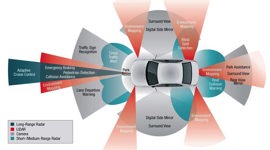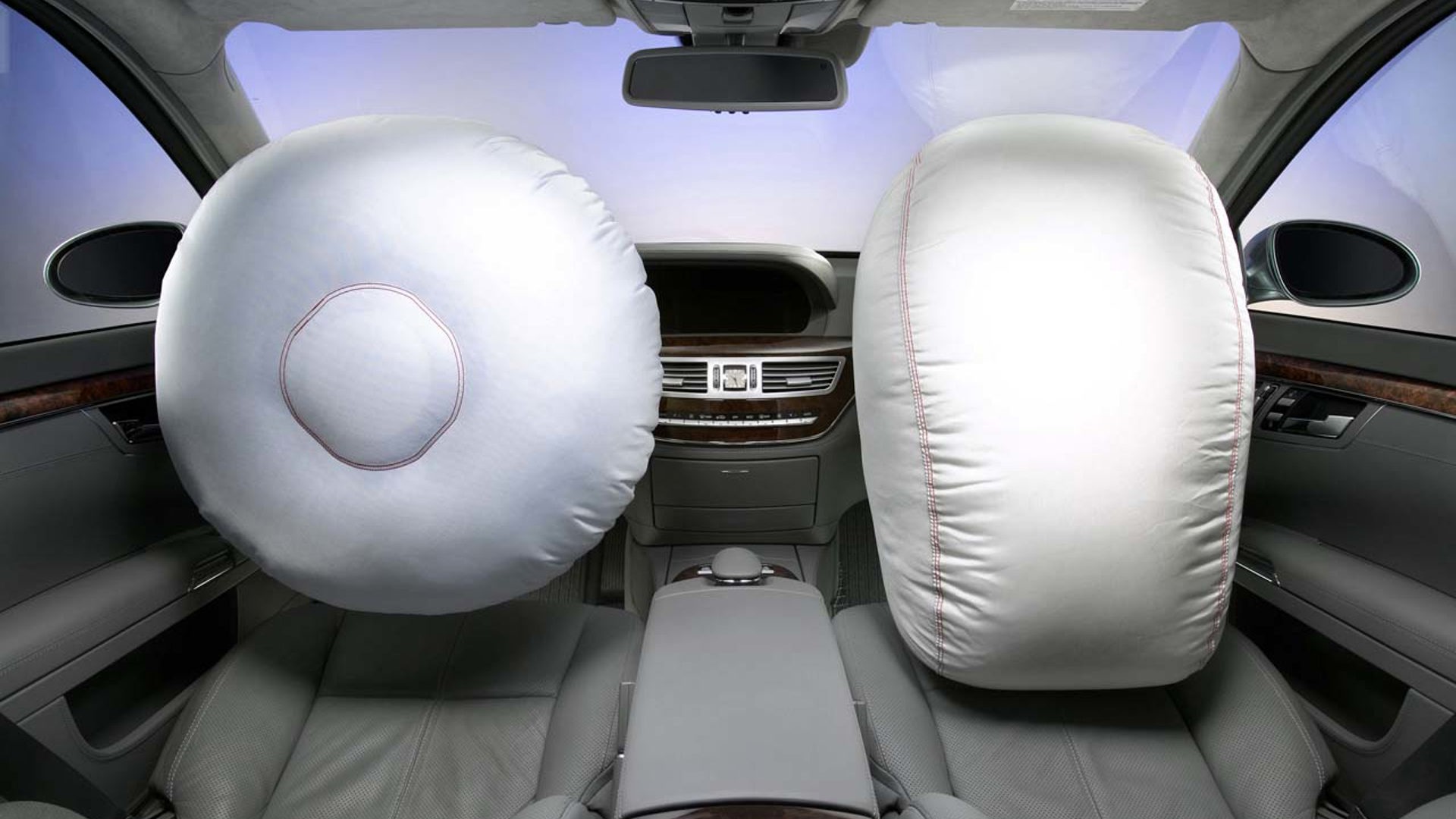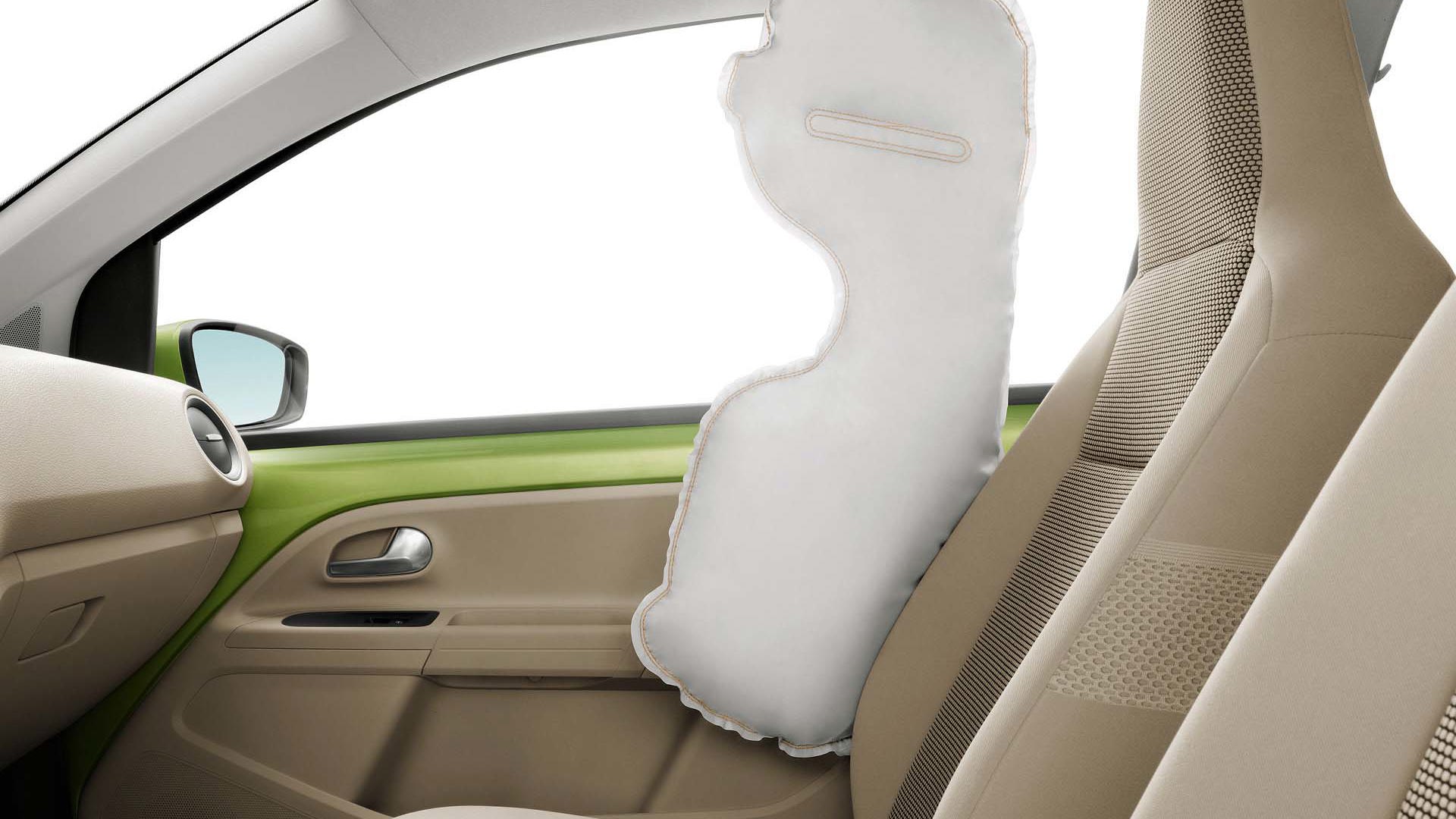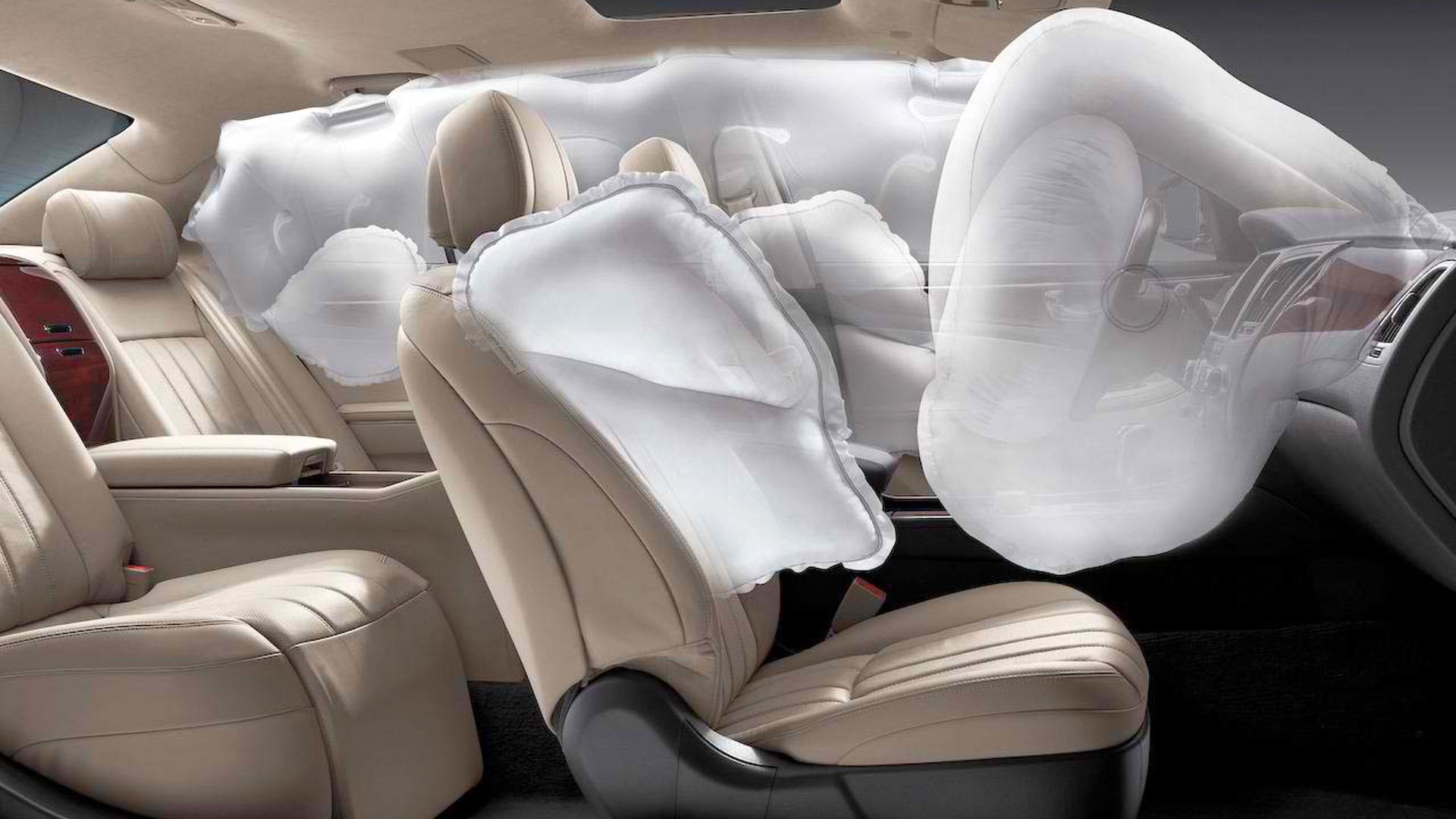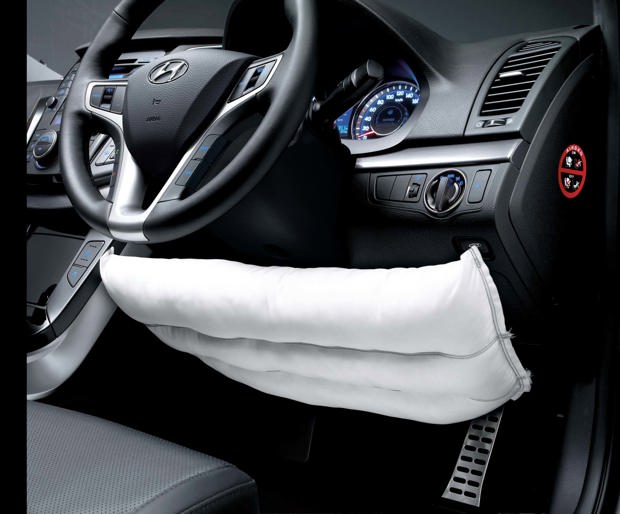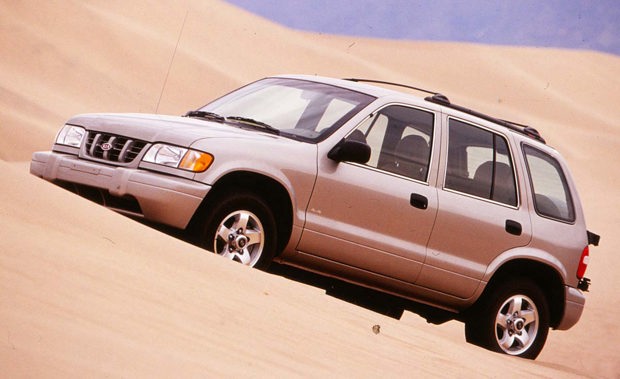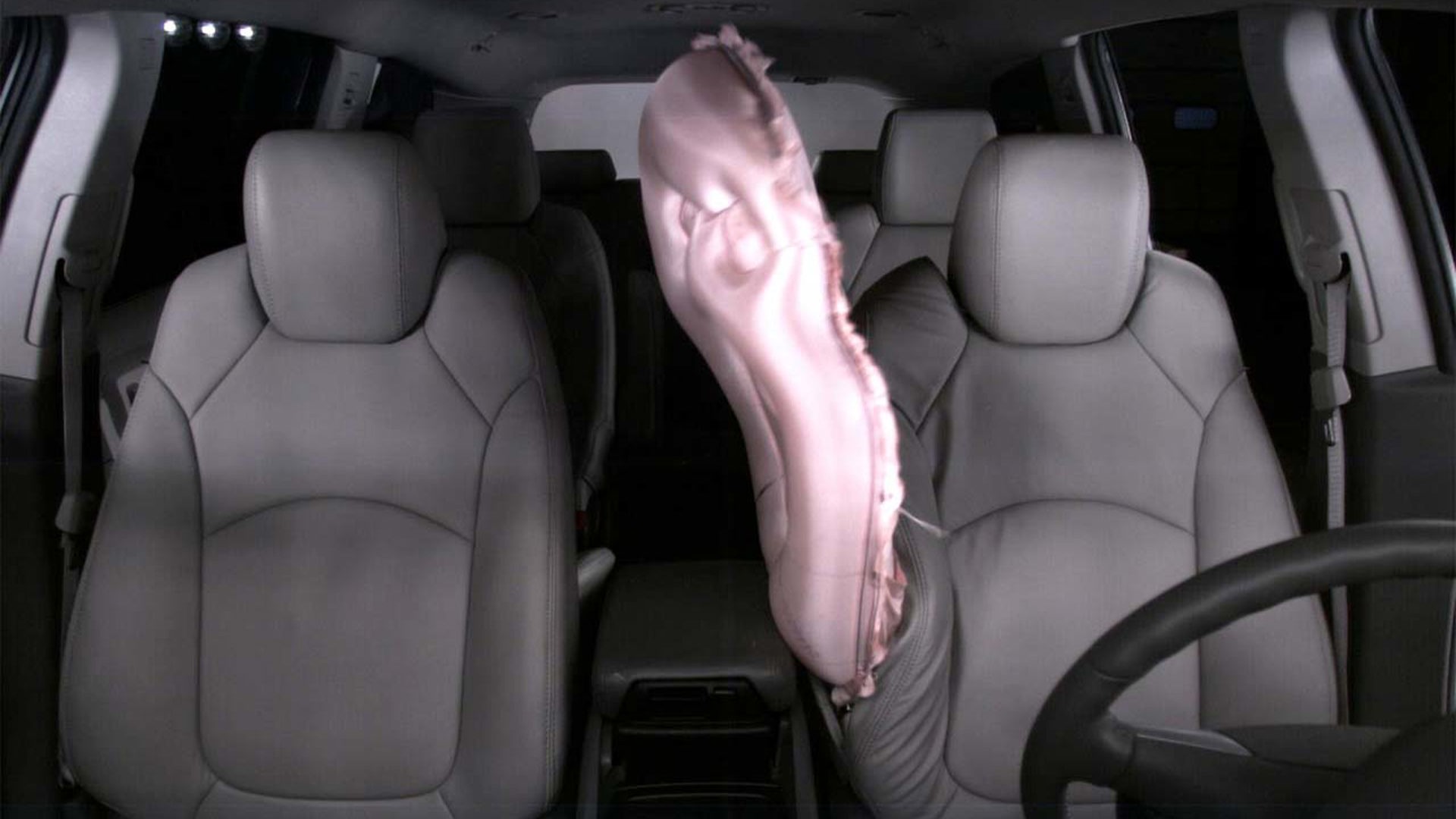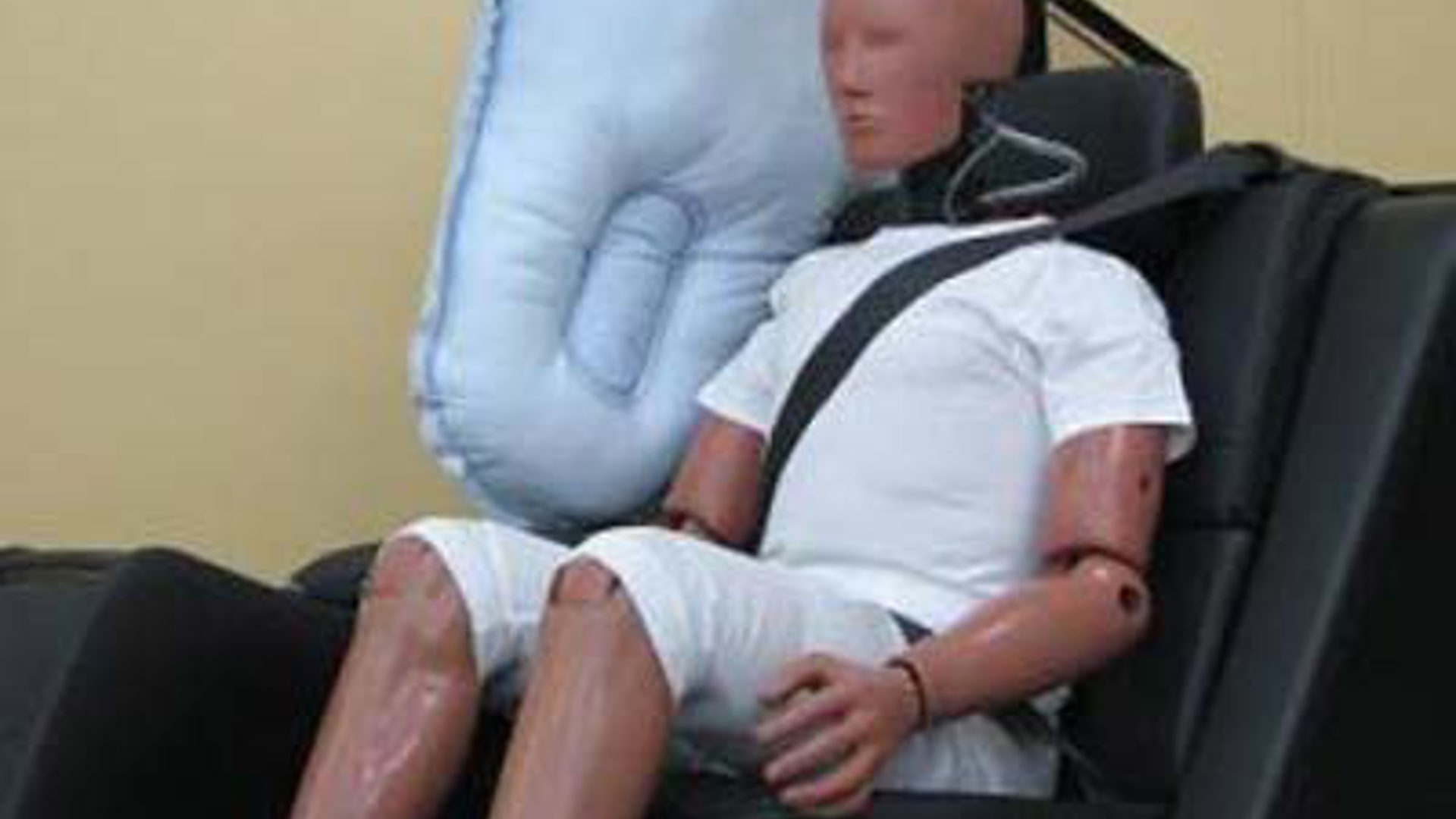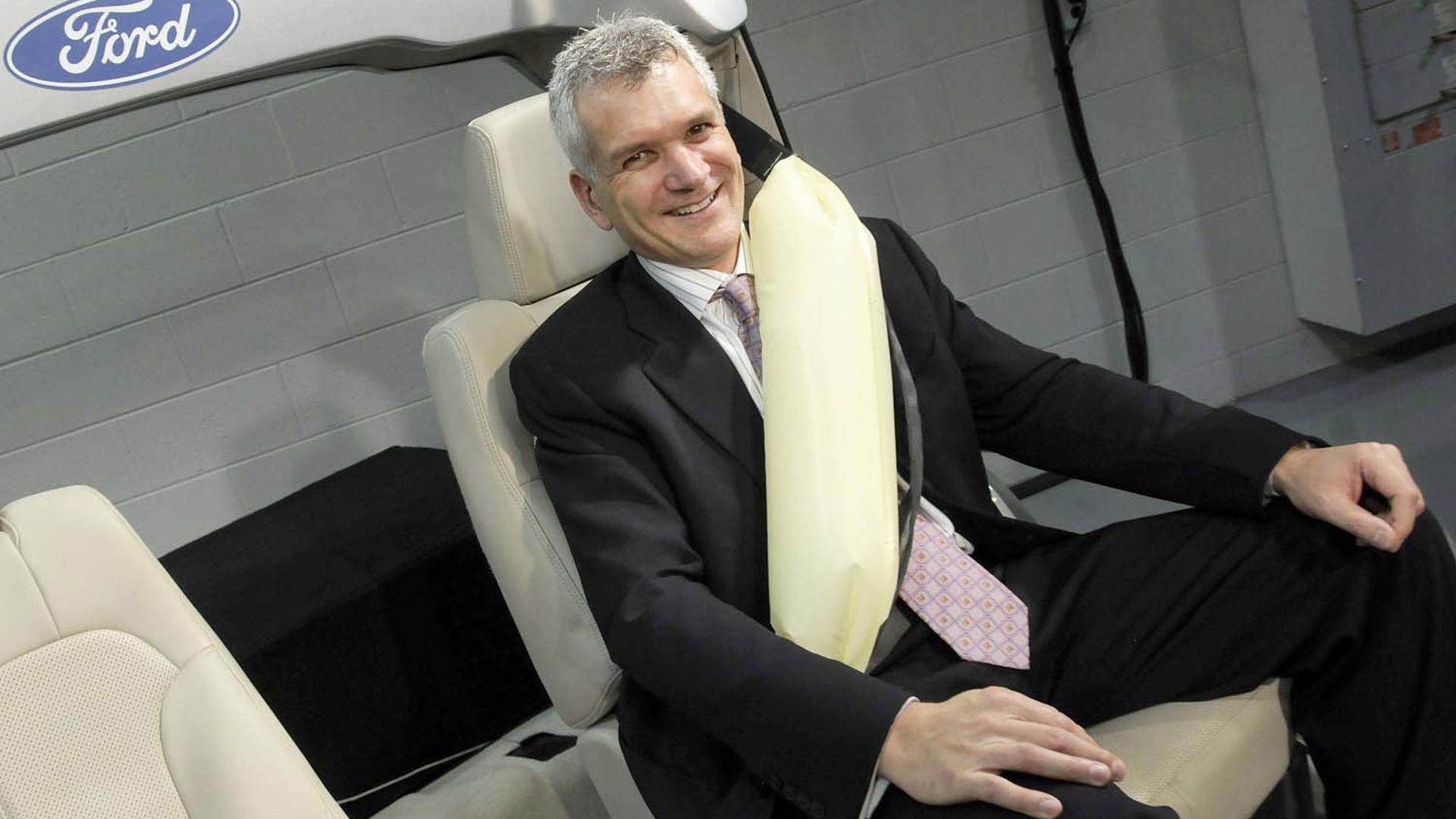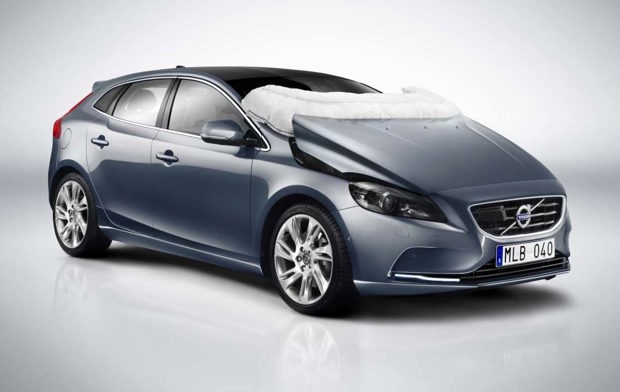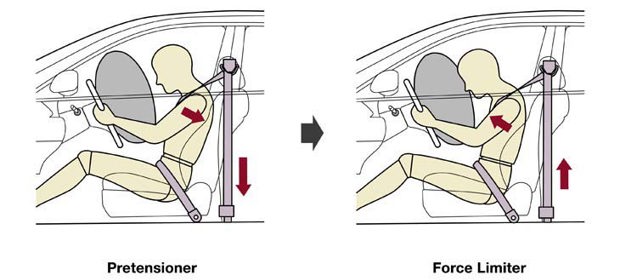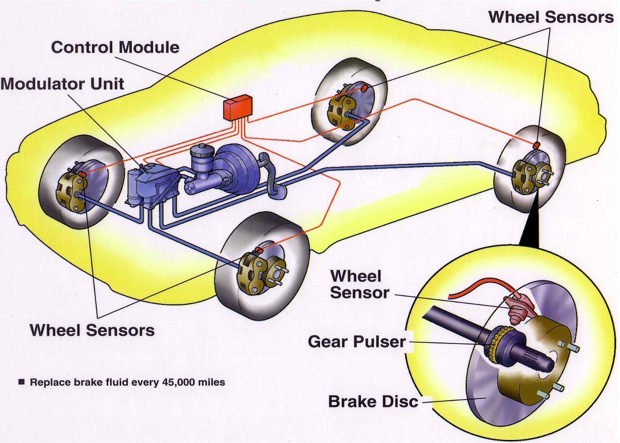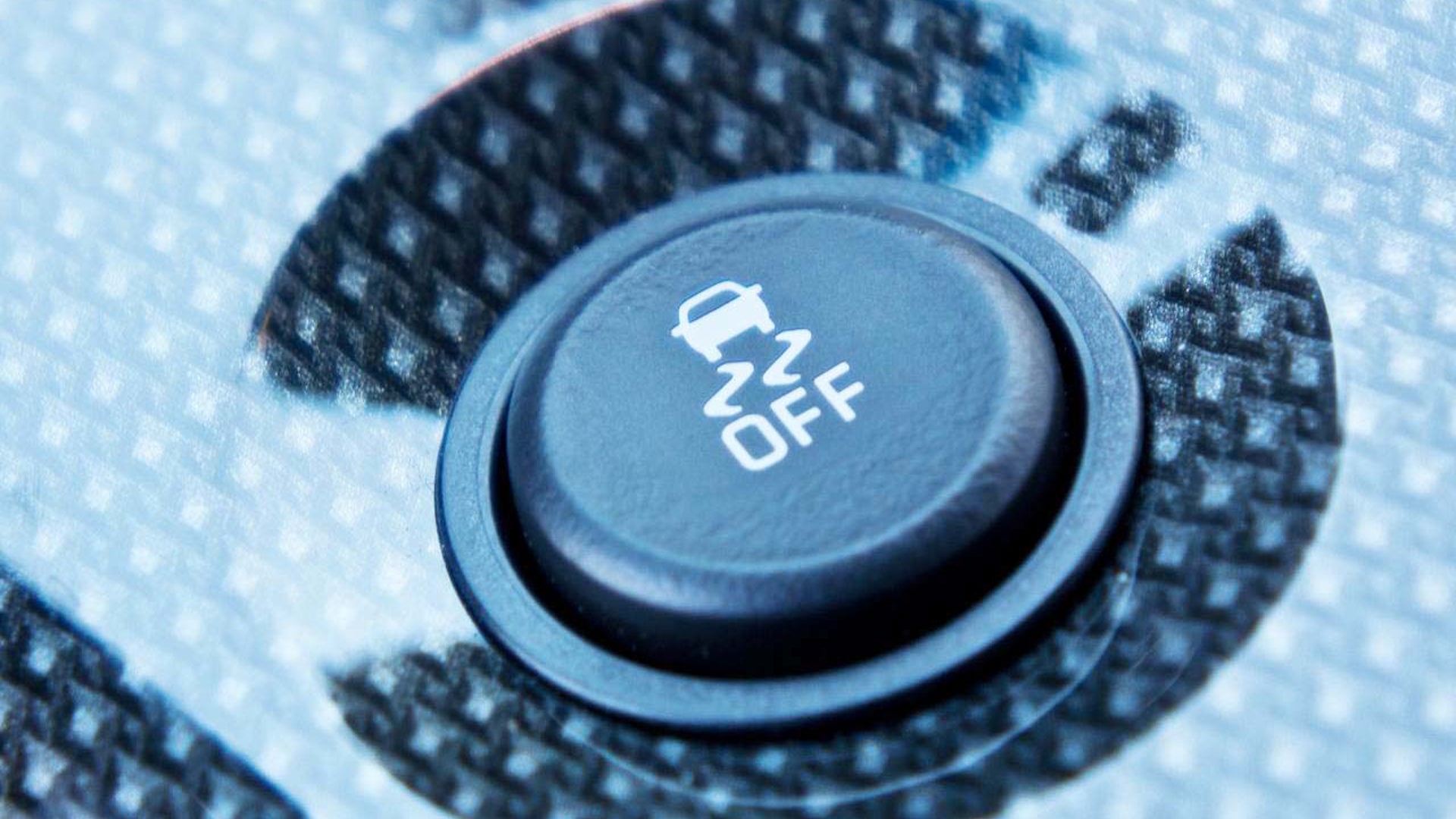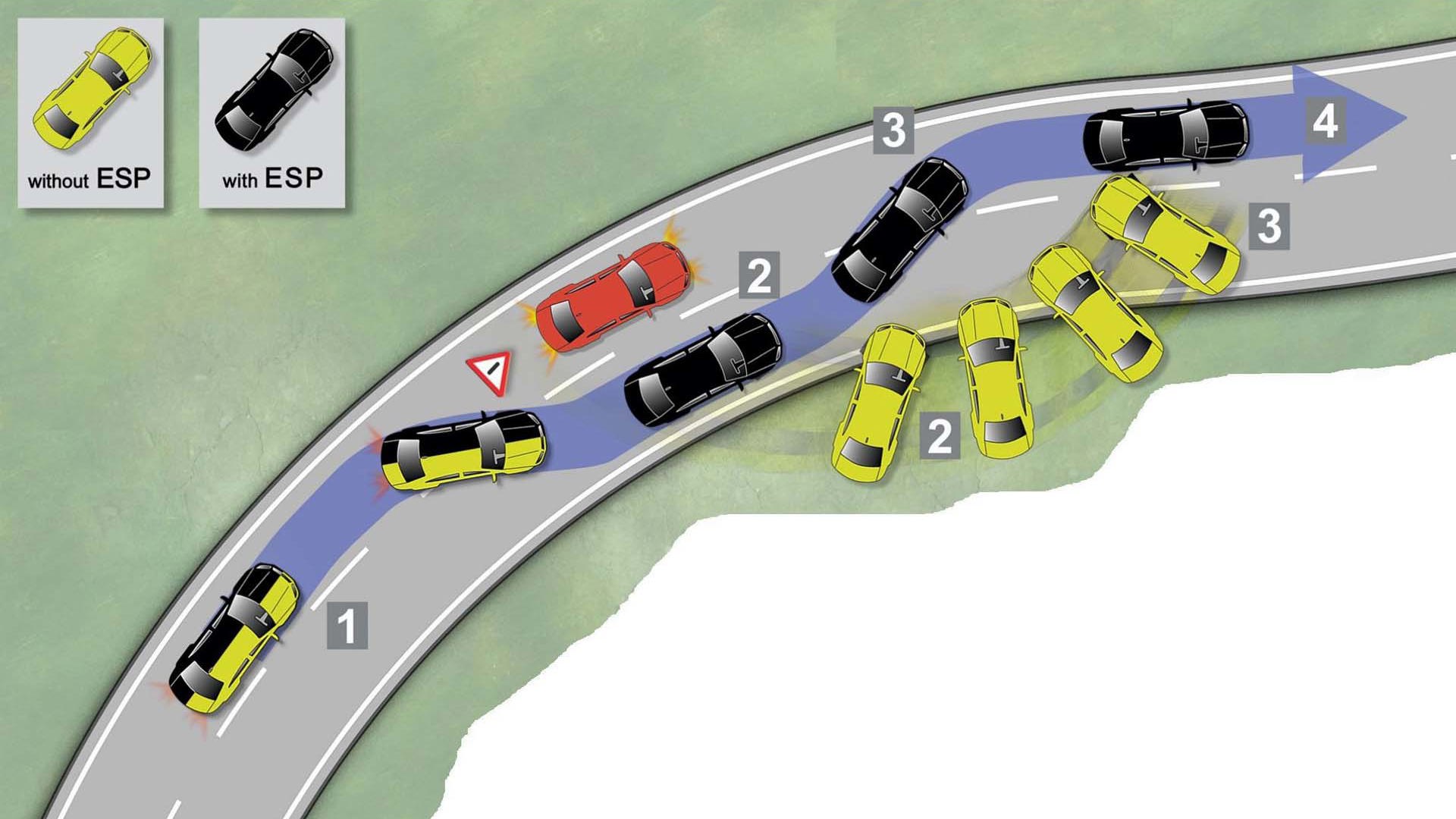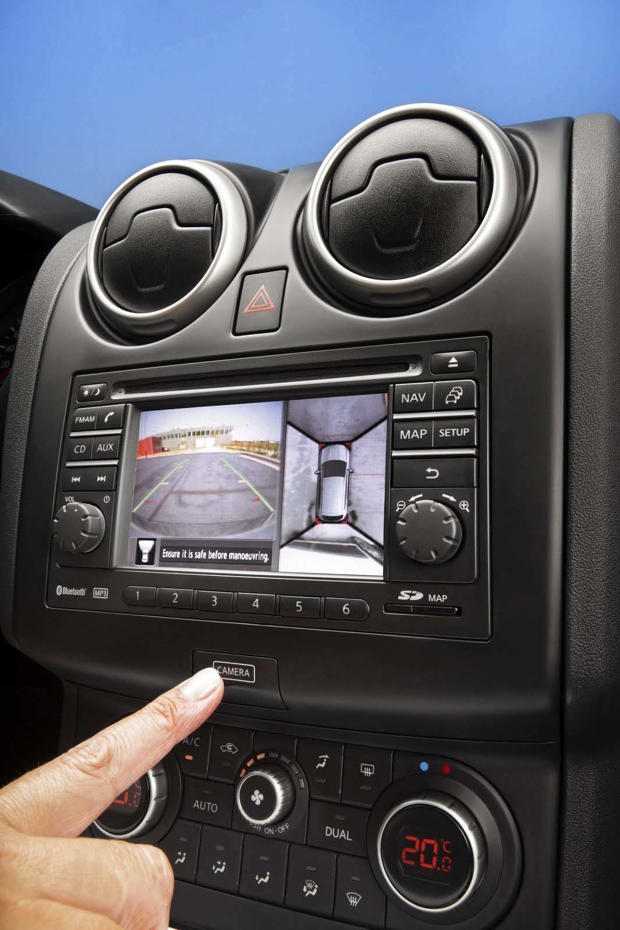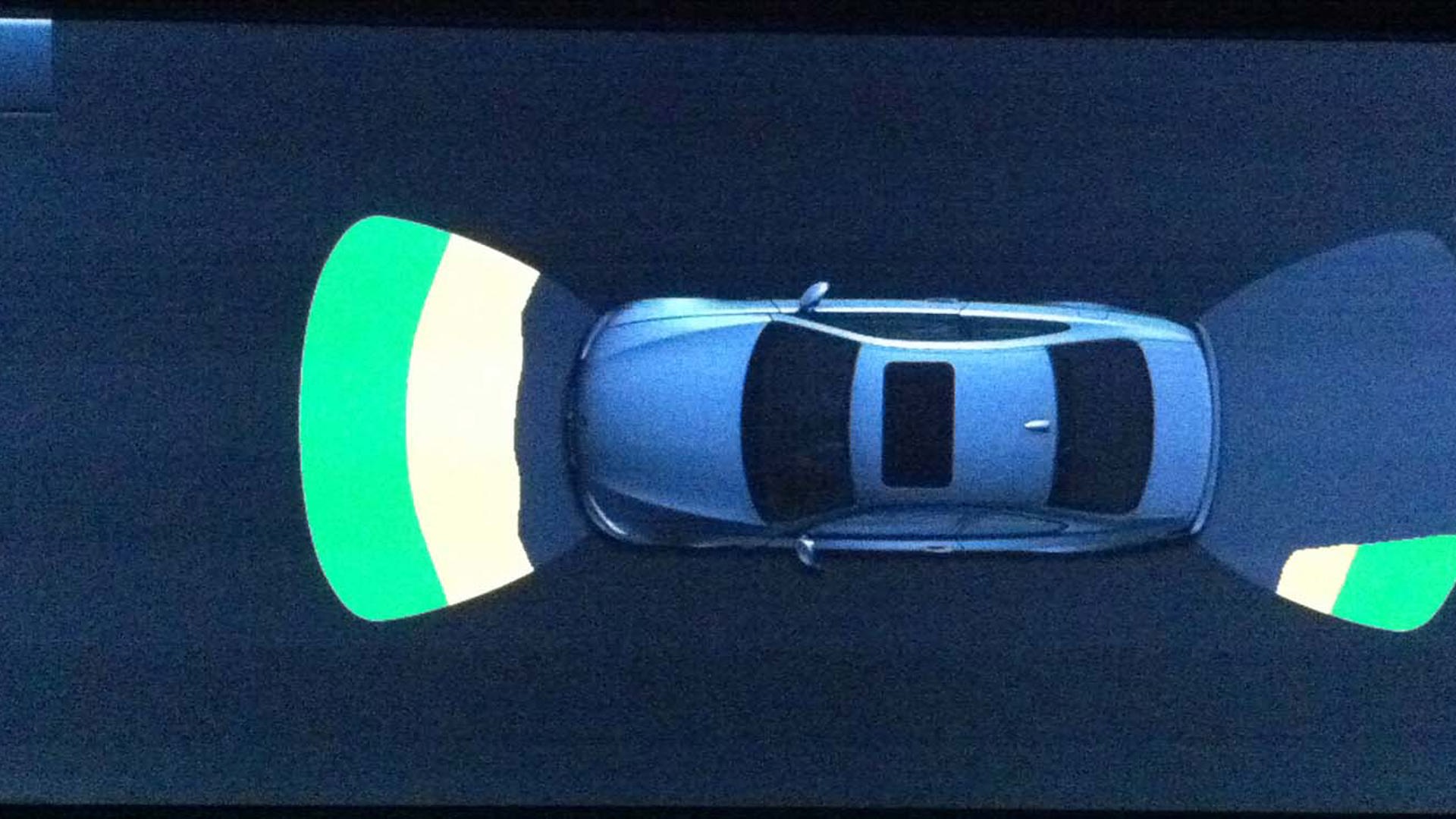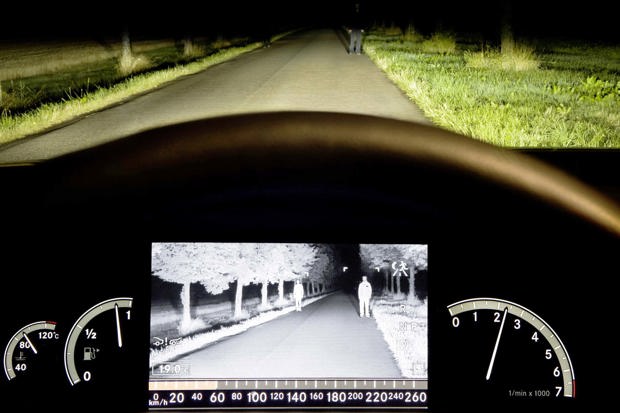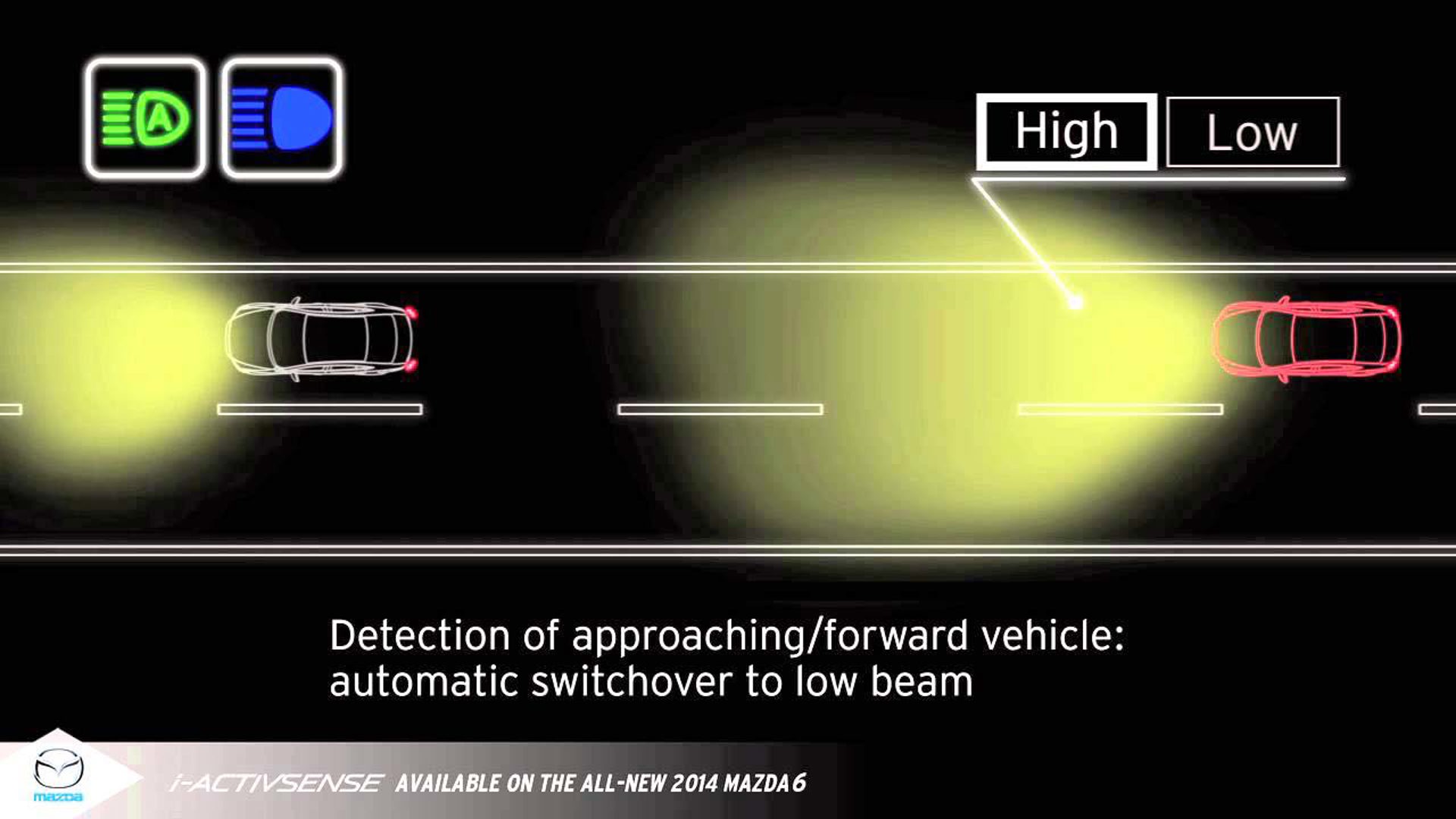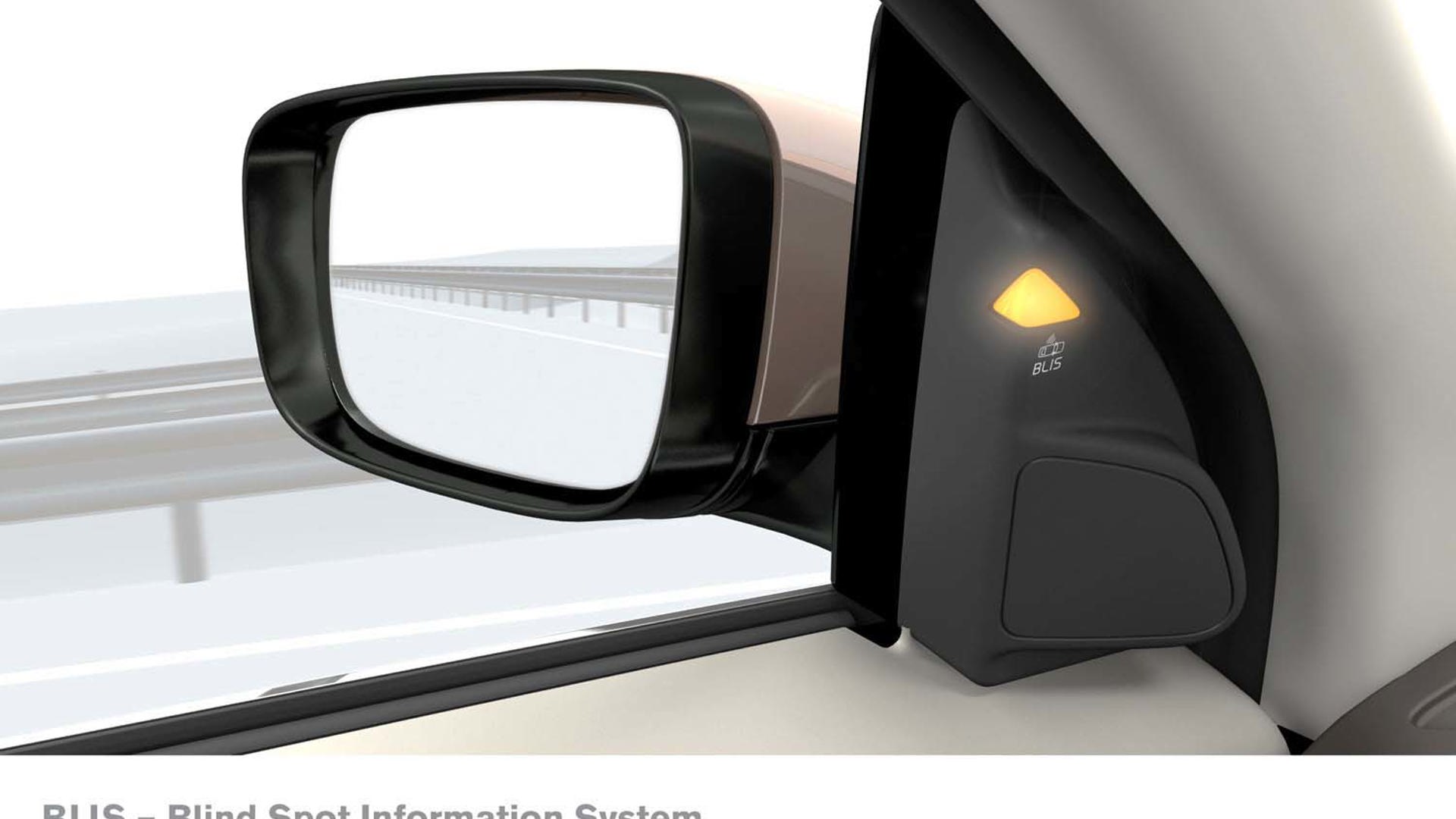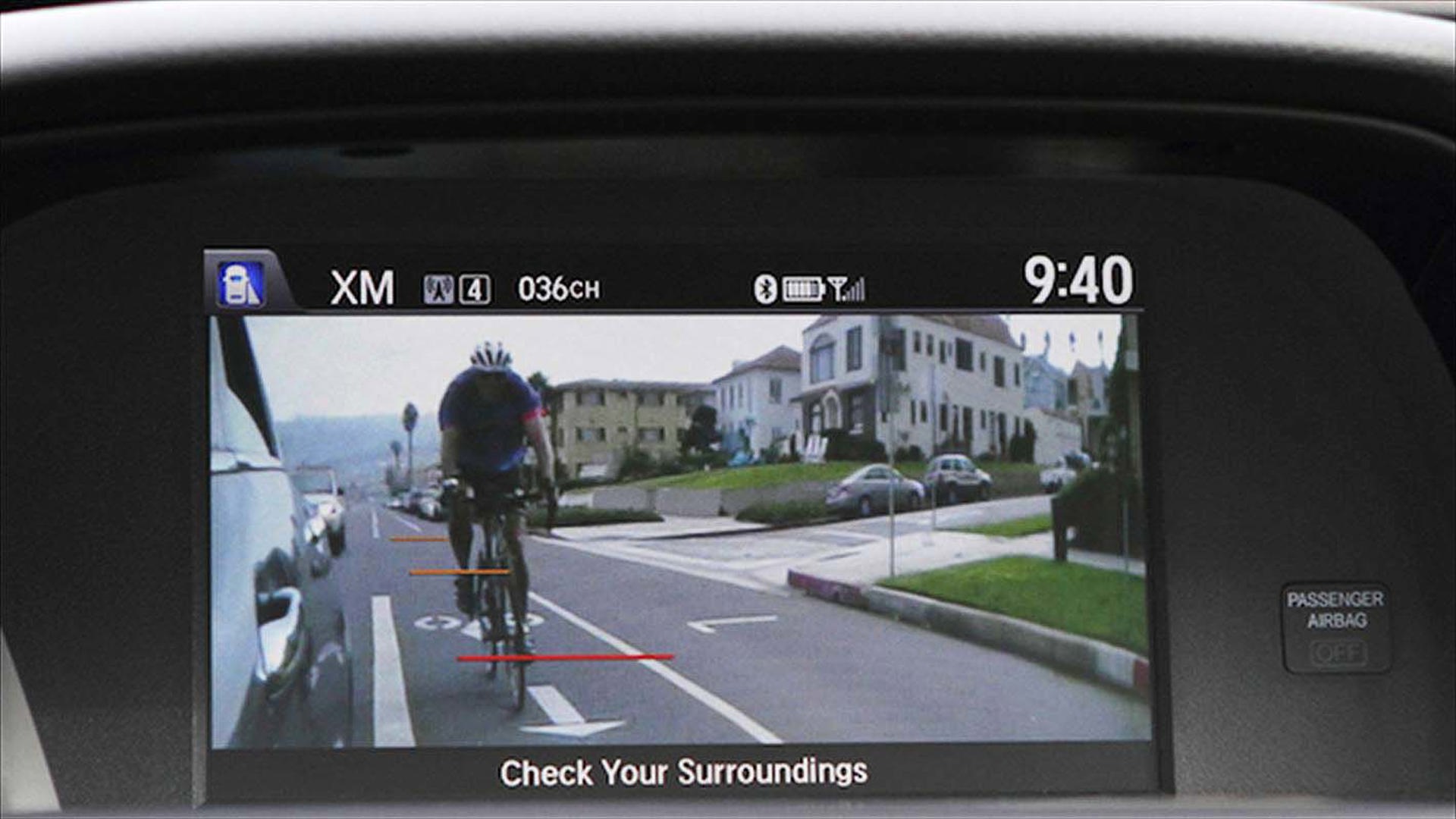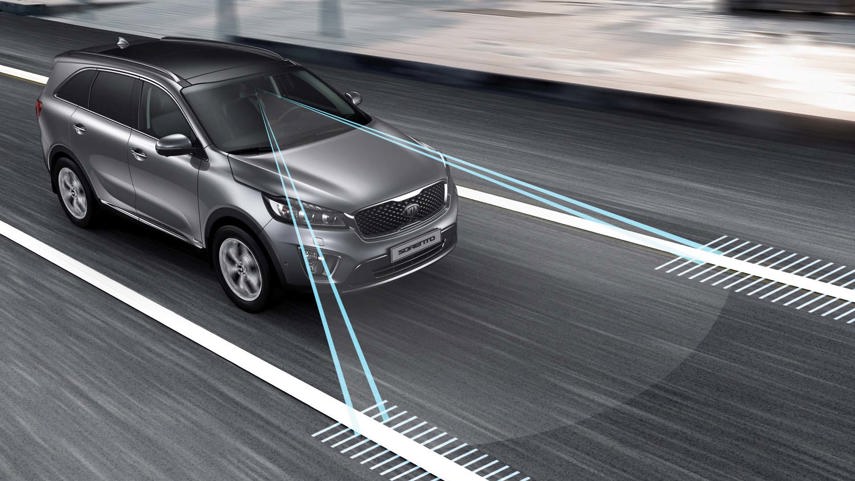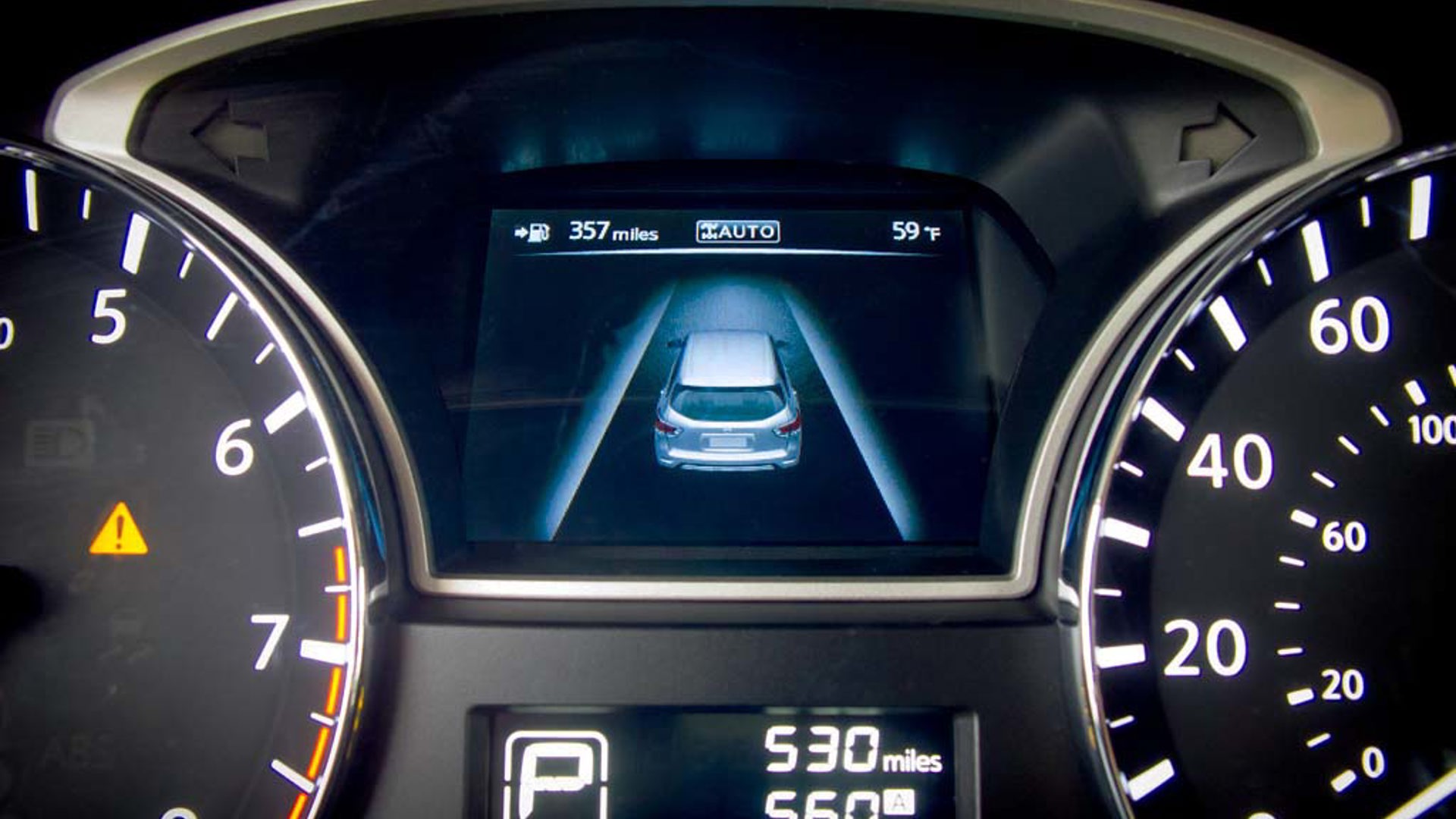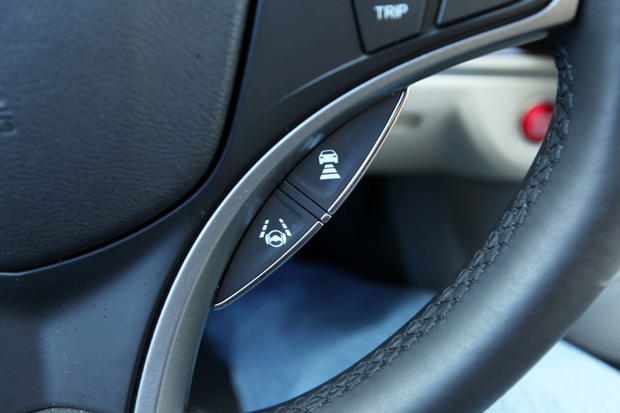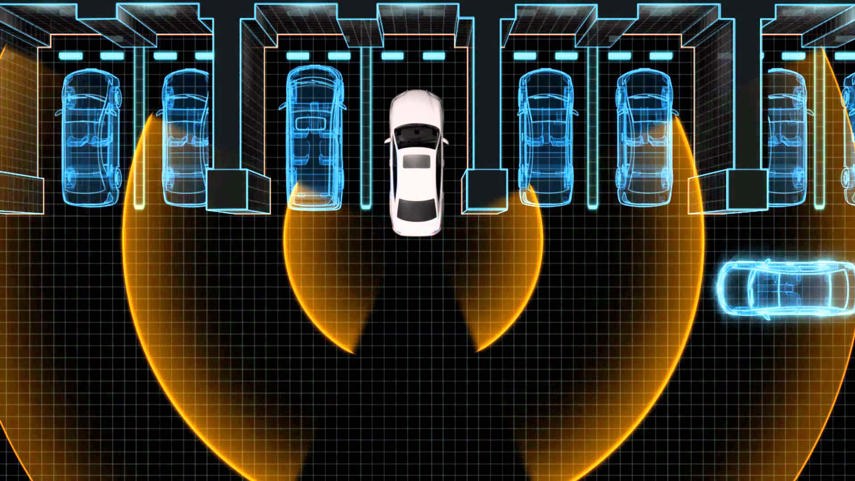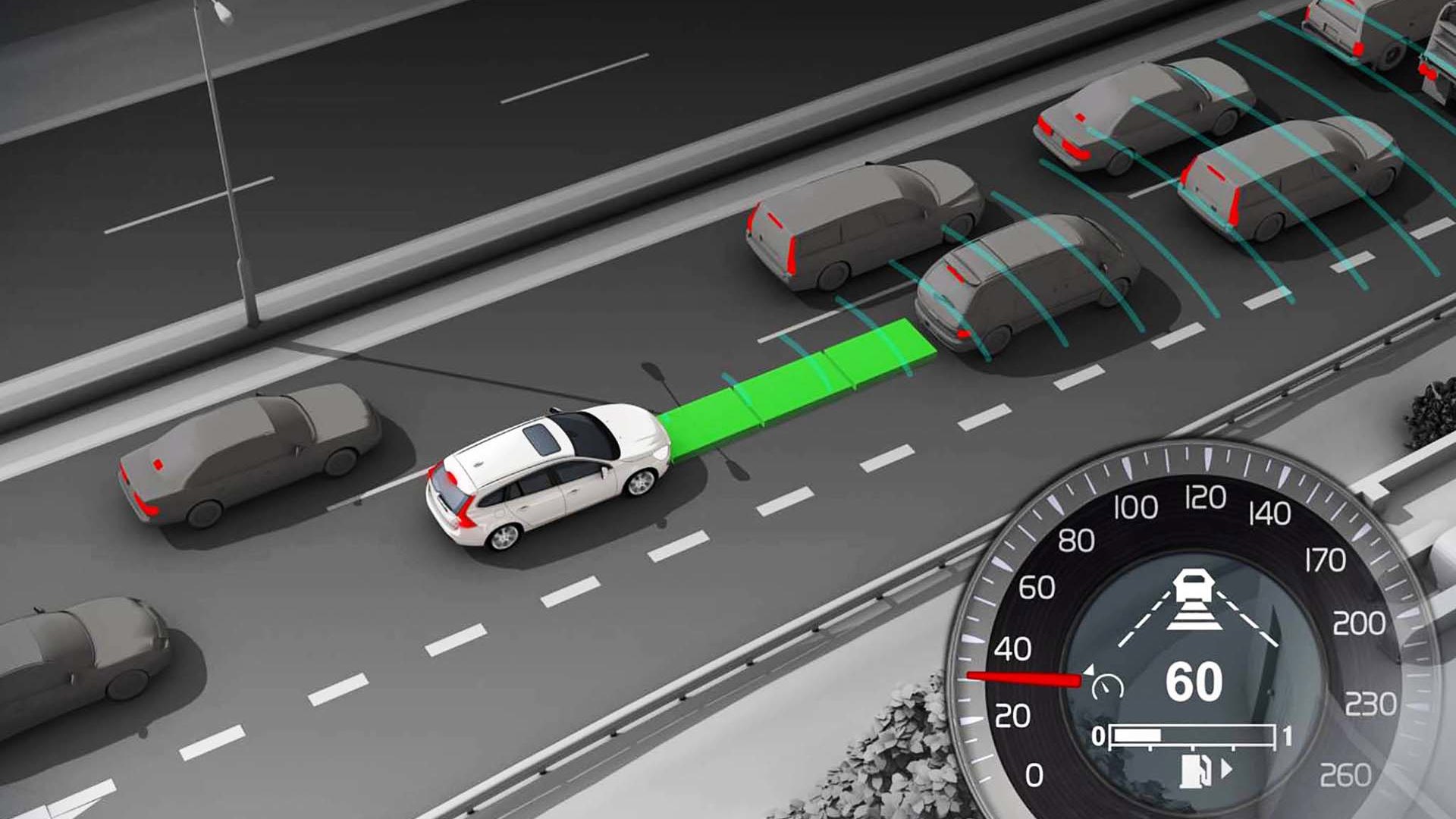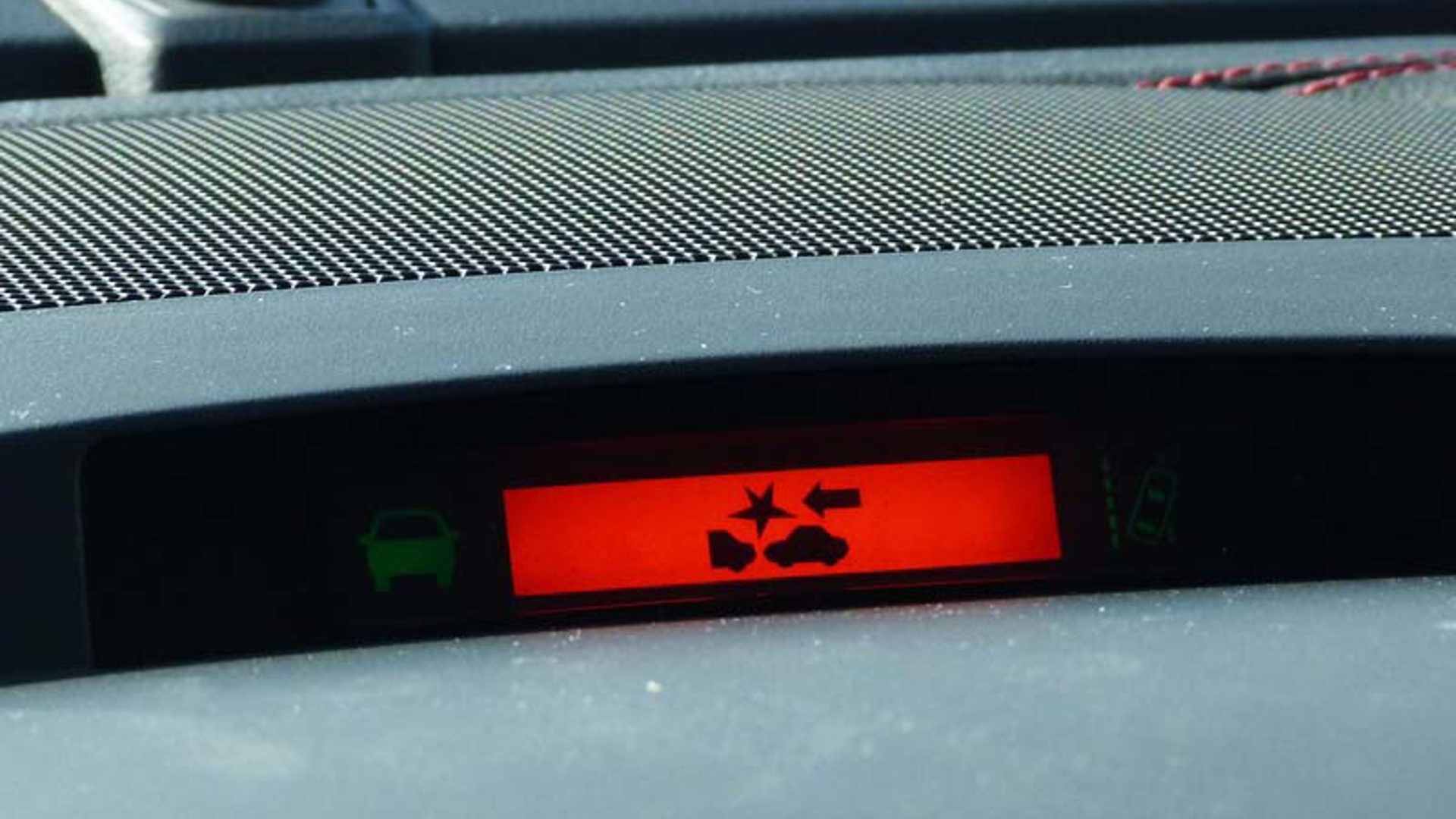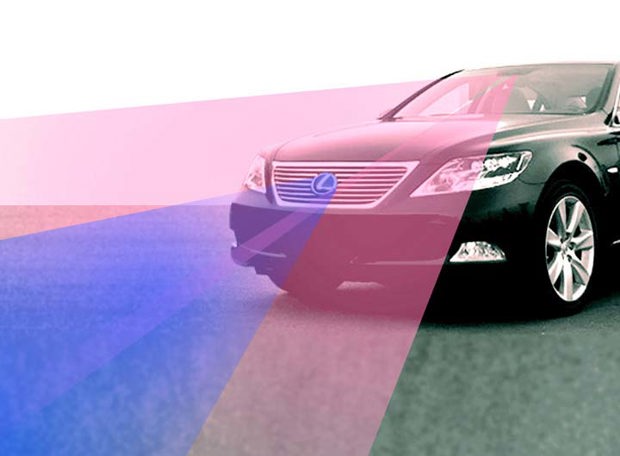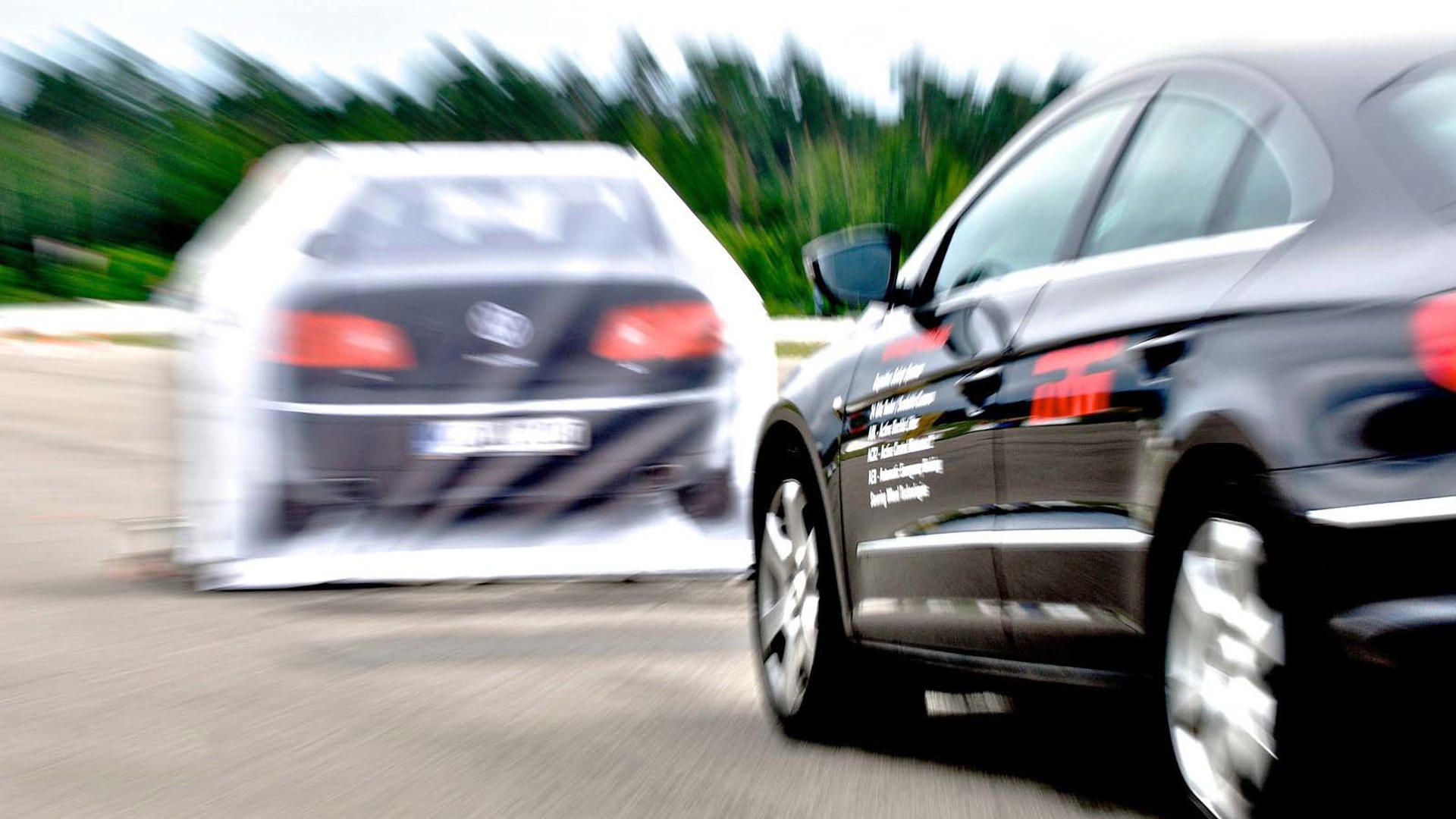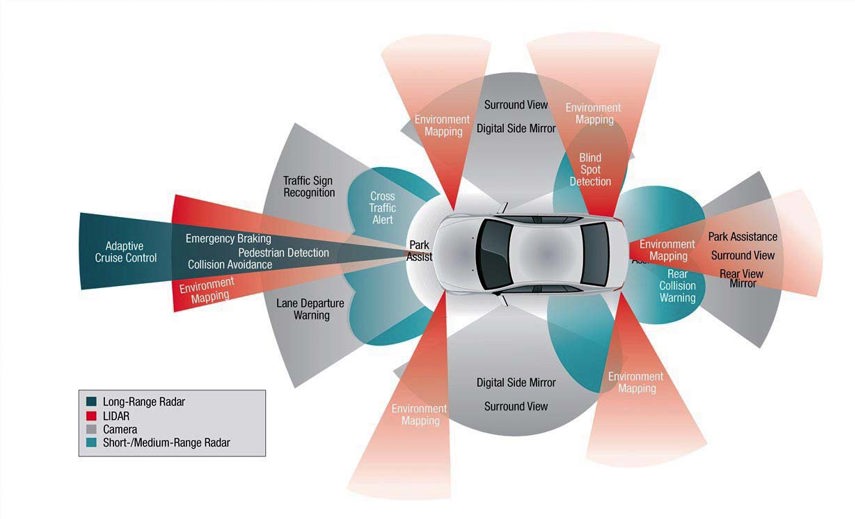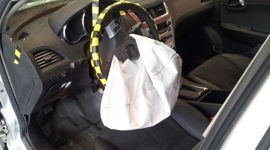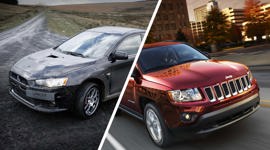Modern automobiles contain a sophisticated array of active and passive safety systems. Though autonomous vehicles are on the distant horizon, many of the essential technologies can already be found in cars on the road today. Here's a look at how the state of the art in electronic safety systems has evolved over time.
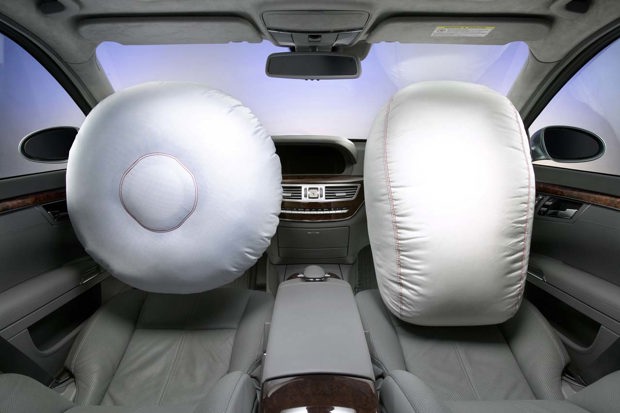 airbag Impala,", and this one about airbags in Buicks." width="620" height="413" data-id="95451" rel="95451"> General Motors is generally credited with being first to install airbags in a production vehicle. It's 'air cushion restraint system' (ACRS) was installed in a few 1973 Chevrolet Impala sedans, and later, in the Oldsmobile Toronado. Check out this video about the now-rare "airbag Impala,", and this one about airbags in Buicks.
airbag Impala,", and this one about airbags in Buicks." width="620" height="413" data-id="95451" rel="95451"> General Motors is generally credited with being first to install airbags in a production vehicle. It's 'air cushion restraint system' (ACRS) was installed in a few 1973 Chevrolet Impala sedans, and later, in the Oldsmobile Toronado. Check out this video about the now-rare "airbag Impala,", and this one about airbags in Buicks.
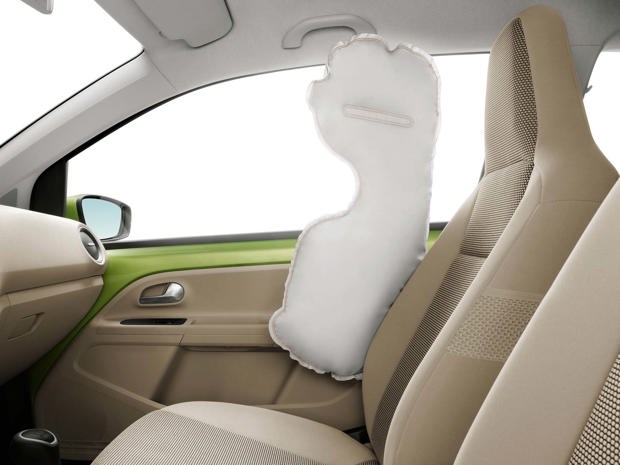 A Swedish company called Autoliv AB patented seat-mounted torso side airbags, and the 1994 Volvo 850 was the first to offer them as an option.
A Swedish company called Autoliv AB patented seat-mounted torso side airbags, and the 1994 Volvo 850 was the first to offer them as an option.
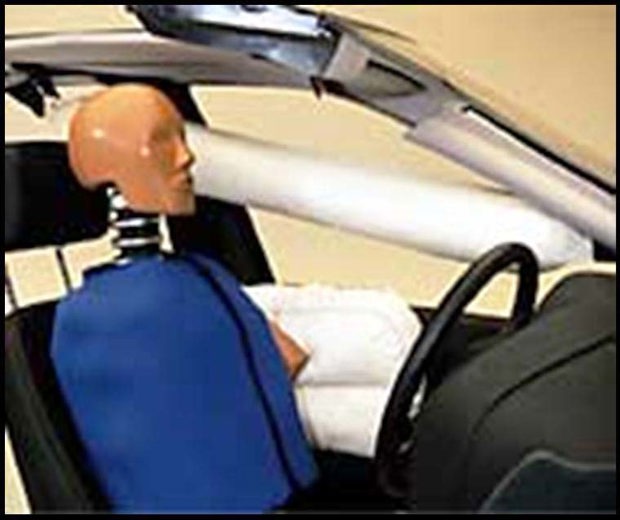 BMW is believed to have been first to install tubular airbags, called "inflatable tubular structure," designed to deploy during a side impact, and protect vehicle occupants' heads.
BMW is believed to have been first to install tubular airbags, called "inflatable tubular structure," designed to deploy during a side impact, and protect vehicle occupants' heads.
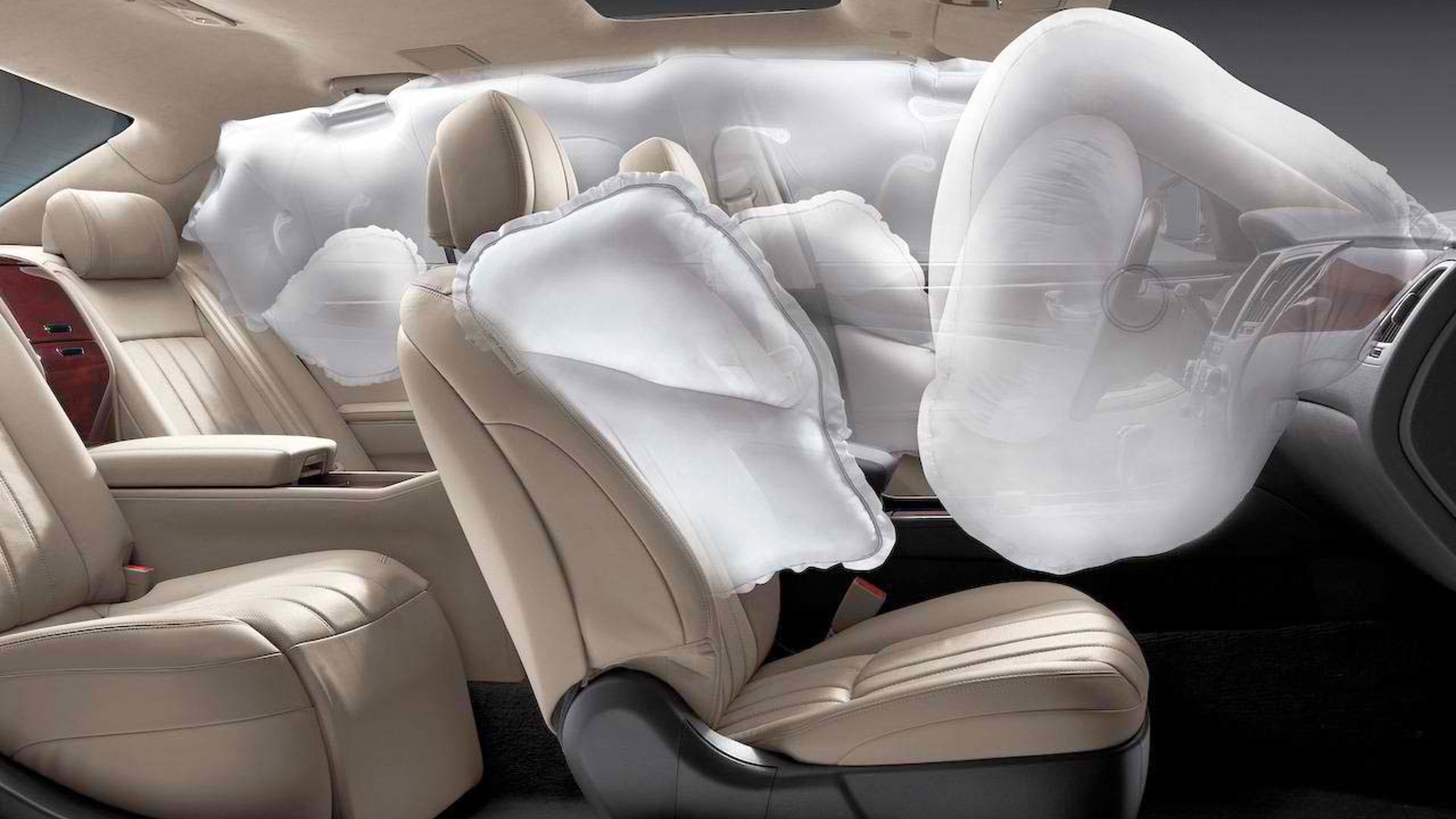 In 1998, Toyota and Volvo introduced curtain-style side airbags. That first Toyota was a Japanese-market luxury model called the Progres (pronounced pro-gray), and Volvo put a similar system into its 1998 S80 flagship sedan.
In 1998, Toyota and Volvo introduced curtain-style side airbags. That first Toyota was a Japanese-market luxury model called the Progres (pronounced pro-gray), and Volvo put a similar system into its 1998 S80 flagship sedan.
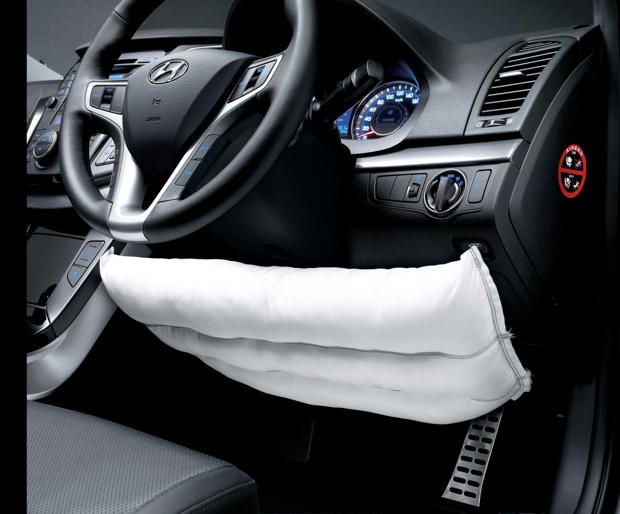 Conceived to reduce leg injuries in frontal collisions, knee airbags for both driver and front passenger are becoming more common, though far from standard across the industry.
Conceived to reduce leg injuries in frontal collisions, knee airbags for both driver and front passenger are becoming more common, though far from standard across the industry.
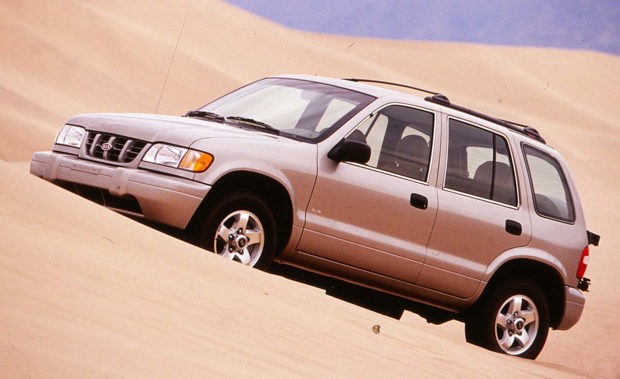 Believe it or not, Kia was first to market with a driver's knee airbag. They're now available in a range of vehicles, however, from modest cars like the Fiat 500L and Subaru Forester, to higher-end vehicles from the likes of BMW, Mercedes-Benz and Tesla. Ford takes a unique approach, building a front passenger knee airbag into the glovebox door.
Believe it or not, Kia was first to market with a driver's knee airbag. They're now available in a range of vehicles, however, from modest cars like the Fiat 500L and Subaru Forester, to higher-end vehicles from the likes of BMW, Mercedes-Benz and Tesla. Ford takes a unique approach, building a front passenger knee airbag into the glovebox door.
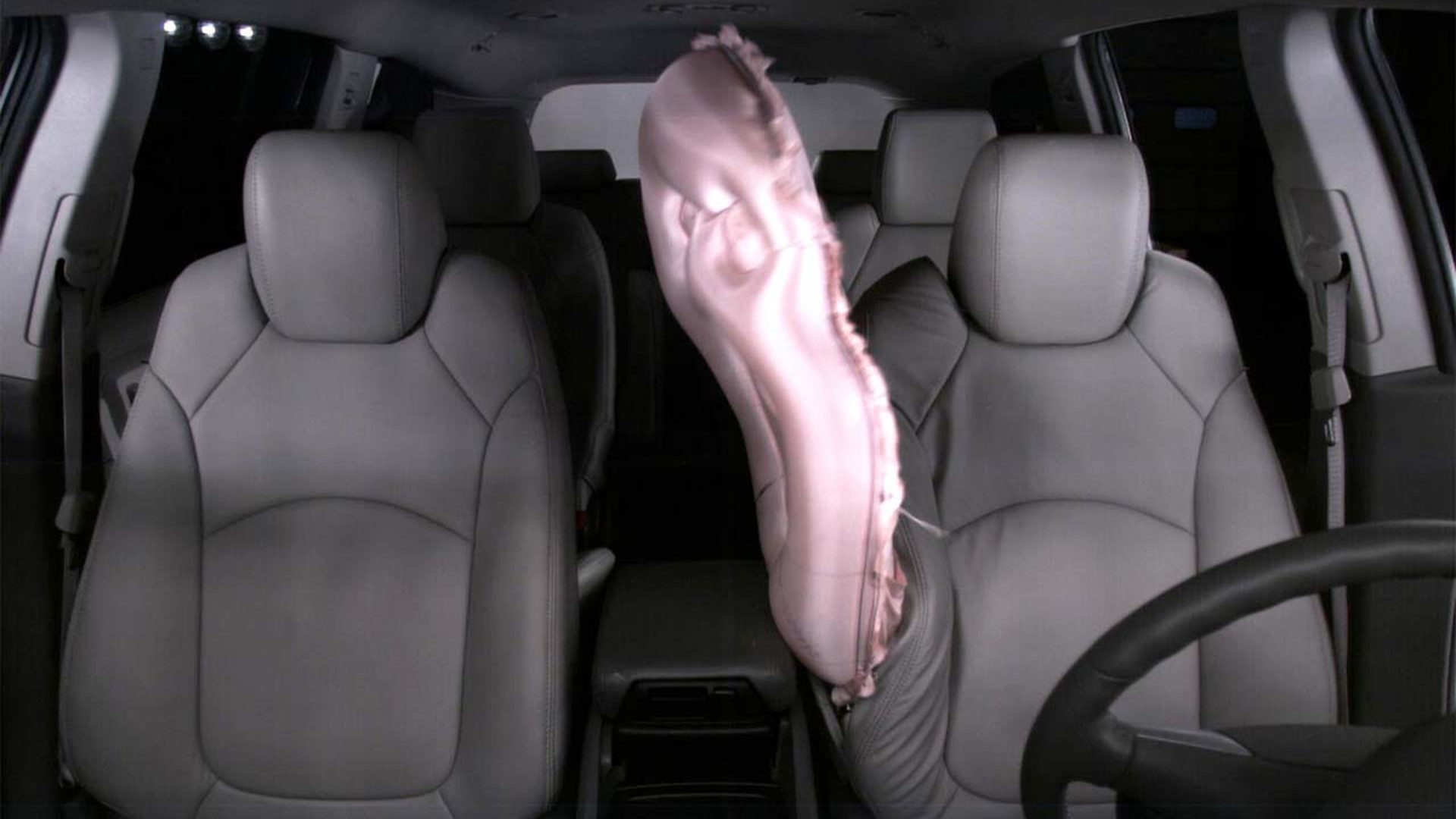 GM was first to put a front-seat centre airbag in a production car when it started building them into its Chevrolet Traverse, Buick Enclave, and GMC Acadia mid-size crossovers. The idea is to help keep a driver alone in a vehicle in place when hit from the right-hand side; the other benefit is preventing two front-seat occupants from striking each other in a side crash.
GM was first to put a front-seat centre airbag in a production car when it started building them into its Chevrolet Traverse, Buick Enclave, and GMC Acadia mid-size crossovers. The idea is to help keep a driver alone in a vehicle in place when hit from the right-hand side; the other benefit is preventing two front-seat occupants from striking each other in a side crash.
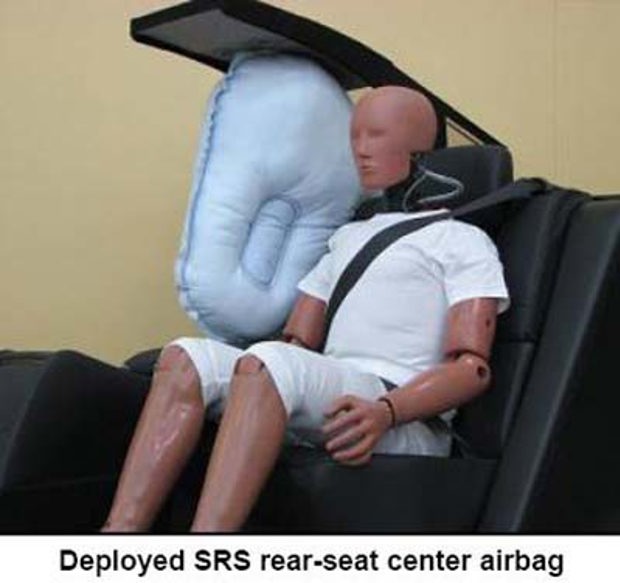 Interestingly enough, though, the first centre airbag was installed in the rear seat of a Toyota Crown Majesta, a luxury model sold in Japan.
Interestingly enough, though, the first centre airbag was installed in the rear seat of a Toyota Crown Majesta, a luxury model sold in Japan.
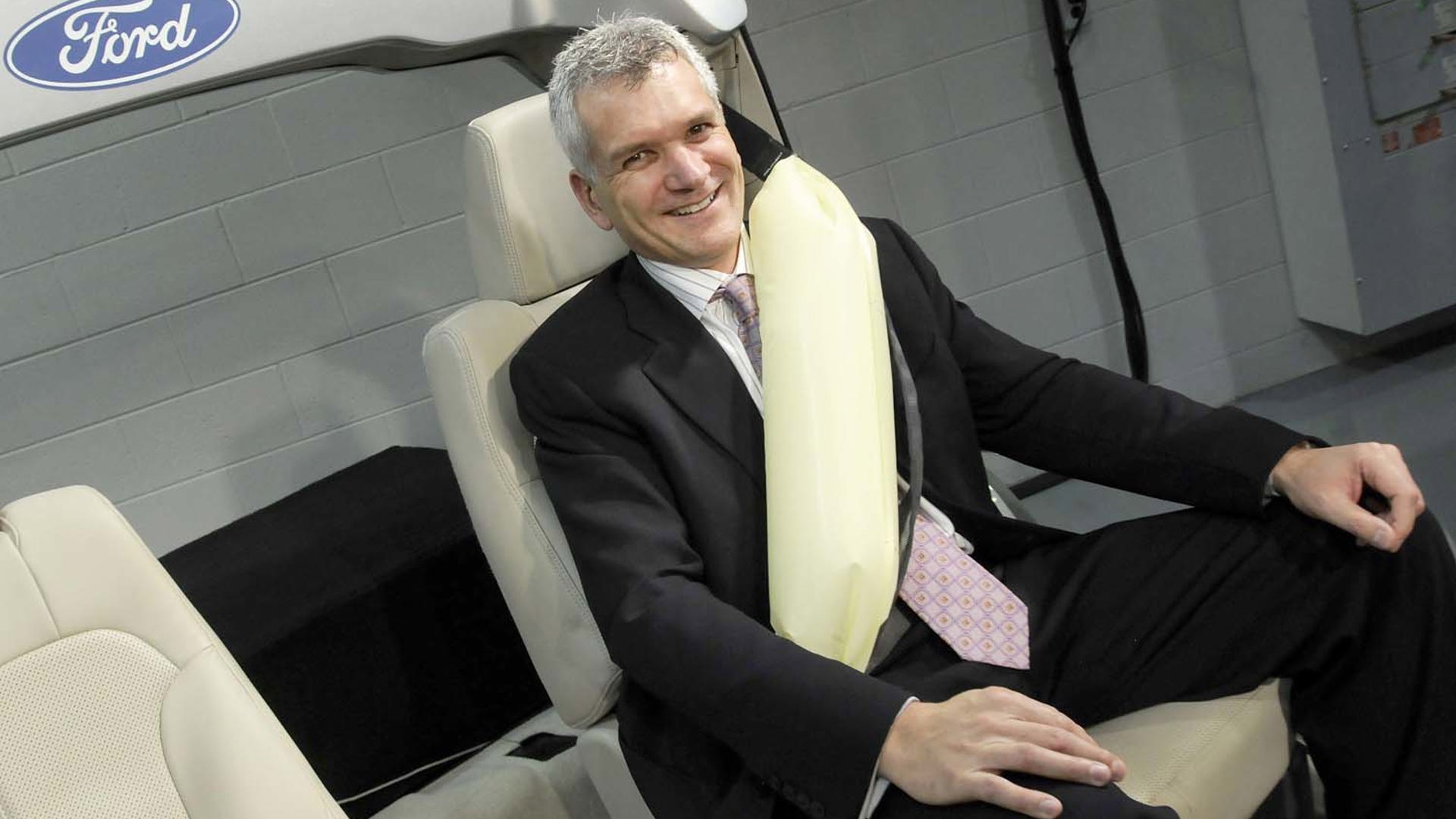 Ford gets the credit for being first to offer inflatable seatbelts in a high-volume production vehicle: they were available in the 2011 Ford Explorer, and later in the 2013 Flex. Other such systems have been available in the Mercedes-Benz S-Class since 2013, and Ford of Europe has offered its inflatable belts in the Mondeo since 2014.
Ford gets the credit for being first to offer inflatable seatbelts in a high-volume production vehicle: they were available in the 2011 Ford Explorer, and later in the 2013 Flex. Other such systems have been available in the Mercedes-Benz S-Class since 2013, and Ford of Europe has offered its inflatable belts in the Mondeo since 2014.
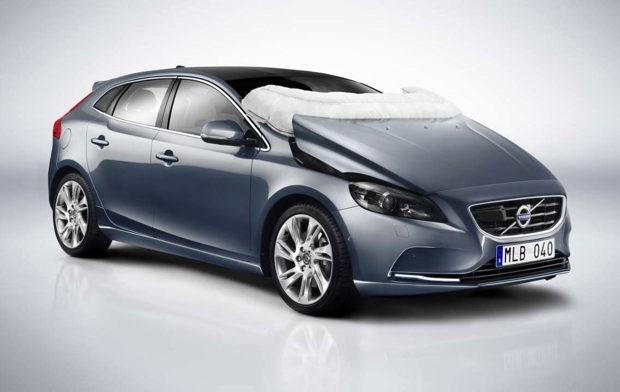 Recent years have seen vehicle designs take into account not only the safety of those inside the car, but also to protect pedestrians. Volvo took the unique step of putting an airbag under the hood of its 2012 V40 to provide head protection to anyone with the misfortune of being struck by the Swedish compact hatchback.
Recent years have seen vehicle designs take into account not only the safety of those inside the car, but also to protect pedestrians. Volvo took the unique step of putting an airbag under the hood of its 2012 V40 to provide head protection to anyone with the misfortune of being struck by the Swedish compact hatchback.
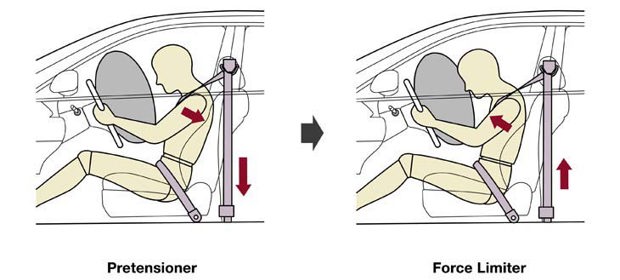 The 1981 Mercedes-Benz S-Class was the first to use seatbelt pretensioners, which use an explosive pyrotechnic force like that in airbags to tighten the belt pre-emptively when sensors detect a collision.
The 1981 Mercedes-Benz S-Class was the first to use seatbelt pretensioners, which use an explosive pyrotechnic force like that in airbags to tighten the belt pre-emptively when sensors detect a collision.
 This anti-skid technology was first used in airplanes, as early as 1929. It migrated into road vehicles in the early 1970s, in cars like the Chrysler Imperial, Lincoln Continental, the Olds Toronado, and some Cadillac models.
This anti-skid technology was first used in airplanes, as early as 1929. It migrated into road vehicles in the early 1970s, in cars like the Chrysler Imperial, Lincoln Continental, the Olds Toronado, and some Cadillac models.
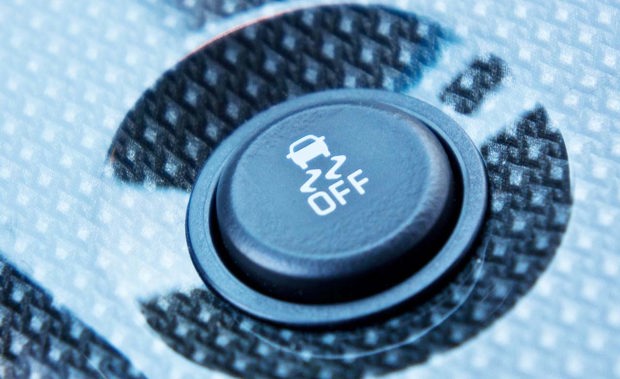 Buick appears to have been first to put traction control into production vehicles with the 1971 introduction of MaxTrac in the Riviera, Estate Wagon, Electra 225, Centurion, and LeSabre.
Buick appears to have been first to put traction control into production vehicles with the 1971 introduction of MaxTrac in the Riviera, Estate Wagon, Electra 225, Centurion, and LeSabre.
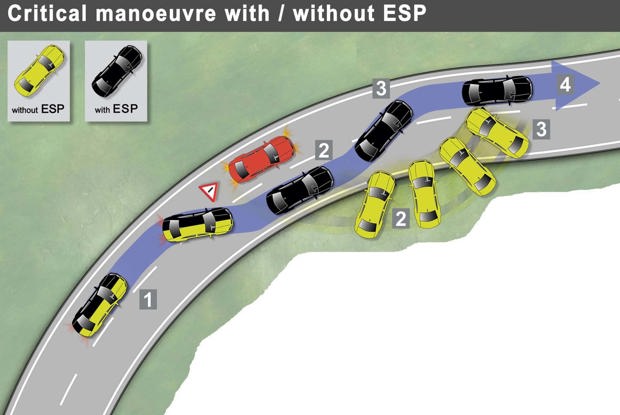 In 1995, the Mercedes-Benz S 600 Coupe, BMW 7 Series, and Toyota Crown Majesta introduced the system now known generically as stability control. Each company calls it something different, but the tech is the same: electronic sensors detect the beginning of a skid, and anti-lock brake components are used to apply braking to individual wheels to keep the car going where it's pointed.
In 1995, the Mercedes-Benz S 600 Coupe, BMW 7 Series, and Toyota Crown Majesta introduced the system now known generically as stability control. Each company calls it something different, but the tech is the same: electronic sensors detect the beginning of a skid, and anti-lock brake components are used to apply braking to individual wheels to keep the car going where it's pointed.
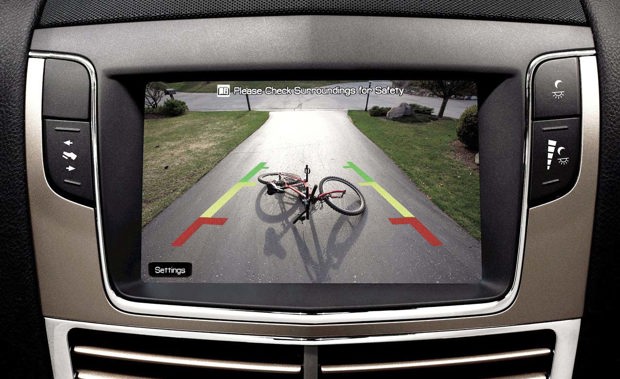 The first back-up camera in a vehicle was shown at General Motors' Autorama event, in the 1956 Buick Centurion concept car. Toyota's 1991 Soarer was the first production model with a rearview camera, but this feature didn't make it into the similar Lexus SC sold in North America. Nissan's upscale brand, Infiniti was first to bring the feature to this continent, as an option in its 2002 Q45 luxury sedan.
The first back-up camera in a vehicle was shown at General Motors' Autorama event, in the 1956 Buick Centurion concept car. Toyota's 1991 Soarer was the first production model with a rearview camera, but this feature didn't make it into the similar Lexus SC sold in North America. Nissan's upscale brand, Infiniti was first to bring the feature to this continent, as an option in its 2002 Q45 luxury sedan.
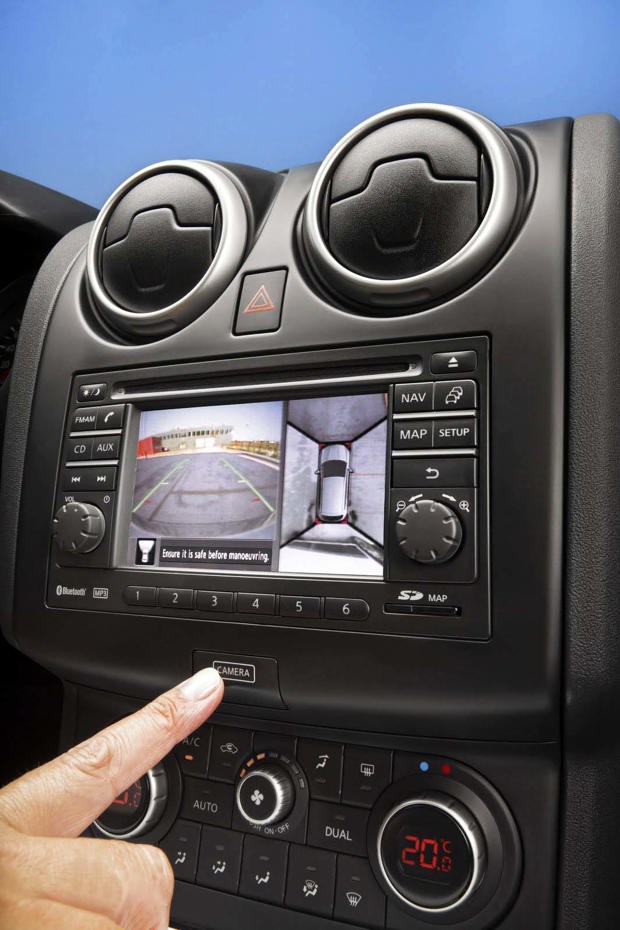 Infiniti was also first to introduce a camera system that could provide a 360-degree, or 'bird's eye,' view of what's around a car, in 2007. The EX35 was the first model sold with the Around-View Monitor in North America, while Nissan's Japan-only Elgrand van beat the Infiniti to the punch, getting it earlier that same year.
Infiniti was also first to introduce a camera system that could provide a 360-degree, or 'bird's eye,' view of what's around a car, in 2007. The EX35 was the first model sold with the Around-View Monitor in North America, while Nissan's Japan-only Elgrand van beat the Infiniti to the punch, getting it earlier that same year.
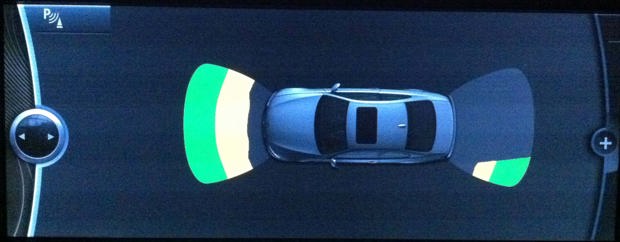 We weren't able to determine who was first to use proximity sensors as parking aids, but we did find out that a Brit named Tony Heyes patented such a system in 1983. He tried to sell it to Jaguar, who turned him down.
We weren't able to determine who was first to use proximity sensors as parking aids, but we did find out that a Brit named Tony Heyes patented such a system in 1983. He tried to sell it to Jaguar, who turned him down.
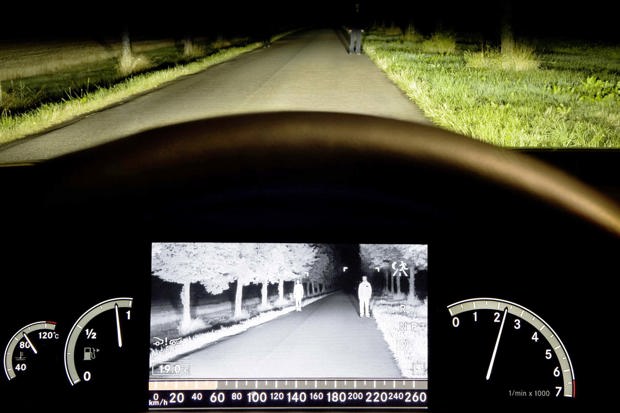 In 2002, Lexus was first to market worldwide with an automotive night vision system in the LX 470 SUV. It used infrared beams in the bumper and a camera mounted in the review mirror housing, and displayed an image near the base of the windshield to show the driver what he or she wasn't seeing.)
In 2002, Lexus was first to market worldwide with an automotive night vision system in the LX 470 SUV. It used infrared beams in the bumper and a camera mounted in the review mirror housing, and displayed an image near the base of the windshield to show the driver what he or she wasn't seeing.)
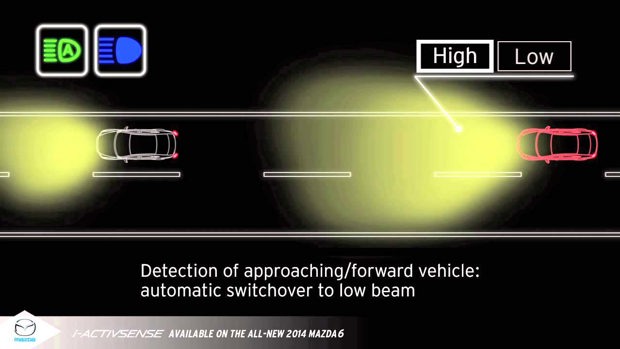 General Motors' 'Autronic Eye' was the first automatic high-beam system. Cadillac began using it in 1952, and it lasted until 1988.
General Motors' 'Autronic Eye' was the first automatic high-beam system. Cadillac began using it in 1952, and it lasted until 1988.
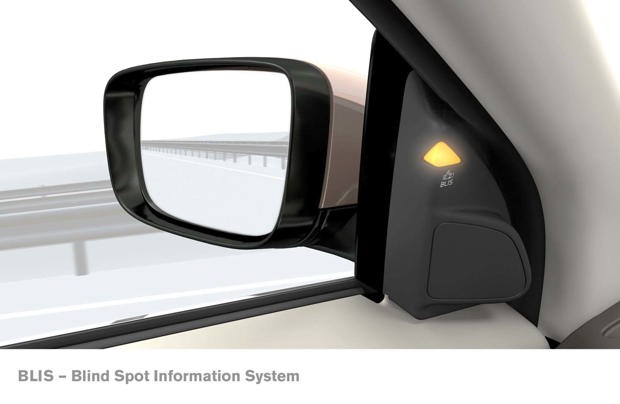 The Swedish safety freaks at Volvo were first to develop a blind spot monitor, called the 'blind spot information system, or BLIS. Volvo first offered it in Australian market models in 2005.
The Swedish safety freaks at Volvo were first to develop a blind spot monitor, called the 'blind spot information system, or BLIS. Volvo first offered it in Australian market models in 2005.
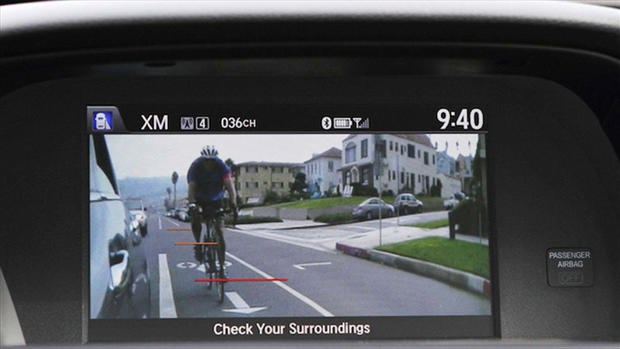 BLIS was a camera-based setup that evolved into a radar-based system with sensors mounted behind rear quarter panels. Camera-based systems are back, however, with Honda's LaneWatch using a camera in the right-hand mirror housing to broadcast an image to the display screen in the dash.
BLIS was a camera-based setup that evolved into a radar-based system with sensors mounted behind rear quarter panels. Camera-based systems are back, however, with Honda's LaneWatch using a camera in the right-hand mirror housing to broadcast an image to the display screen in the dash.
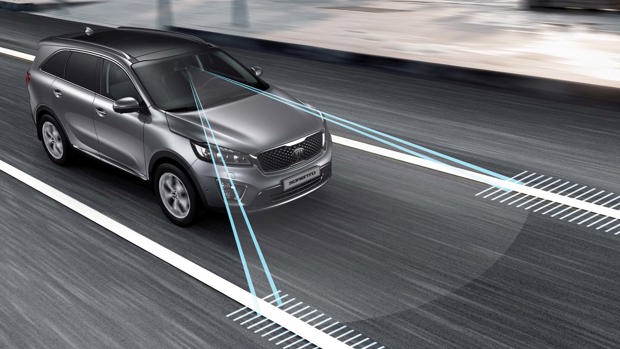 Infiniti brought the first lane departure warning system to North America in the 2004 FX crossover and 2005 M sedan. It used a camera in the rearview mirror housing to track lane markings on the road, and generated an audible warning if the car began to drift over the line.
Infiniti brought the first lane departure warning system to North America in the 2004 FX crossover and 2005 M sedan. It used a camera in the rearview mirror housing to track lane markings on the road, and generated an audible warning if the car began to drift over the line.
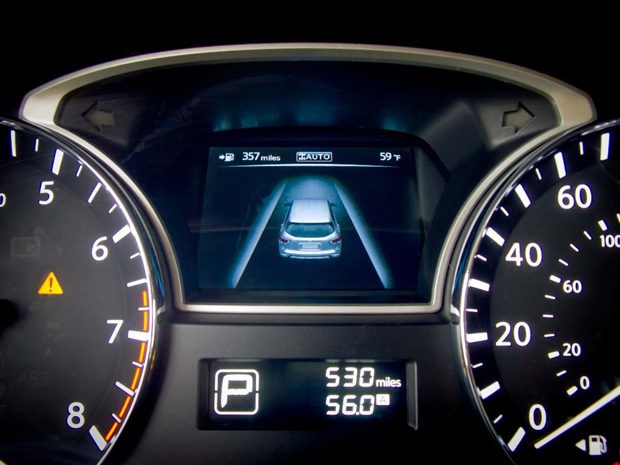 A few years later, Infiniti's EX went a step further with North America's first lane departure prevention (LDP) system, which monitored lane position and, if it sensed the car getting too close to a line, would apply the brakes on the opposite side of the car to pull it back toward the middle of the lane.
A few years later, Infiniti's EX went a step further with North America's first lane departure prevention (LDP) system, which monitored lane position and, if it sensed the car getting too close to a line, would apply the brakes on the opposite side of the car to pull it back toward the middle of the lane.
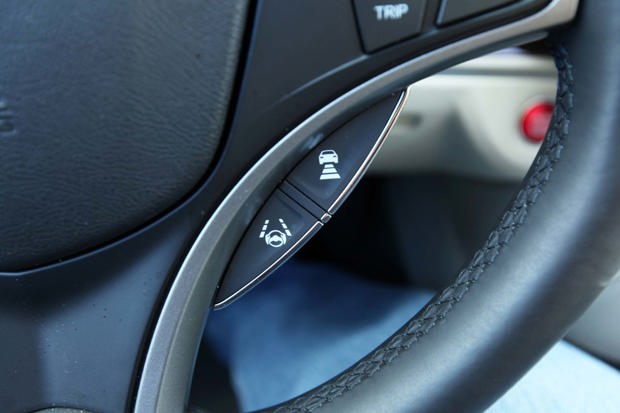 Modern LDP systems go another step beyond, using the electric power steering motor to actually steer the car when an inattentive driver lets the car drift too close to one side or the other of a lane.
Modern LDP systems go another step beyond, using the electric power steering motor to actually steer the car when an inattentive driver lets the car drift too close to one side or the other of a lane.
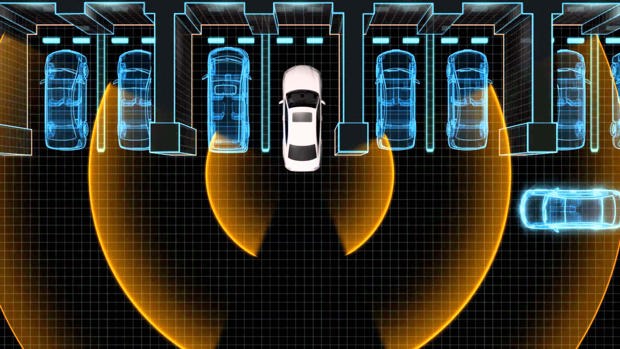 Ford's cross traffic alert system debuted in 2008, using the same radar sensors employed by that company's blind spot monitoring setup. Few modern safety systems are as everyday-useful as this, taking the guesswork out of whether it's safe to reverse out of a parking space in a busy lot where visibility is hampered by adjacent vehicles. Of course, the low-tech solution is to back IN to the space so you can drive out...
Ford's cross traffic alert system debuted in 2008, using the same radar sensors employed by that company's blind spot monitoring setup. Few modern safety systems are as everyday-useful as this, taking the guesswork out of whether it's safe to reverse out of a parking space in a busy lot where visibility is hampered by adjacent vehicles. Of course, the low-tech solution is to back IN to the space so you can drive out...
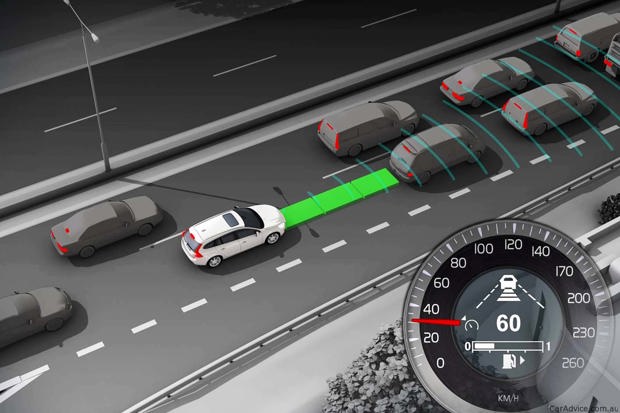 In the mid-1990s, Mitsubishi and Toyota introduced "adaptive" cruise control systems in Japanese-market cars that used laser to scan the road in front for slower vehicles, and adjust speed accordingly. In 1999, Mercedes-Benz introduced Distronic, which brought "autonomous" cruise control to worldwide markets.
In the mid-1990s, Mitsubishi and Toyota introduced "adaptive" cruise control systems in Japanese-market cars that used laser to scan the road in front for slower vehicles, and adjust speed accordingly. In 1999, Mercedes-Benz introduced Distronic, which brought "autonomous" cruise control to worldwide markets.
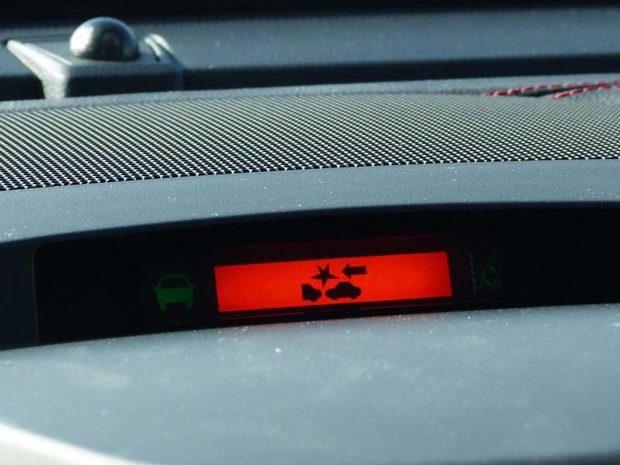 It looks like Lexus' LX 430 was the first car to bring a forward collision warning system to North America, using radar sensors to watch for obstacles, and generate audible and visual warnings if the driver doesn't react.
It looks like Lexus' LX 430 was the first car to bring a forward collision warning system to North America, using radar sensors to watch for obstacles, and generate audible and visual warnings if the driver doesn't react.
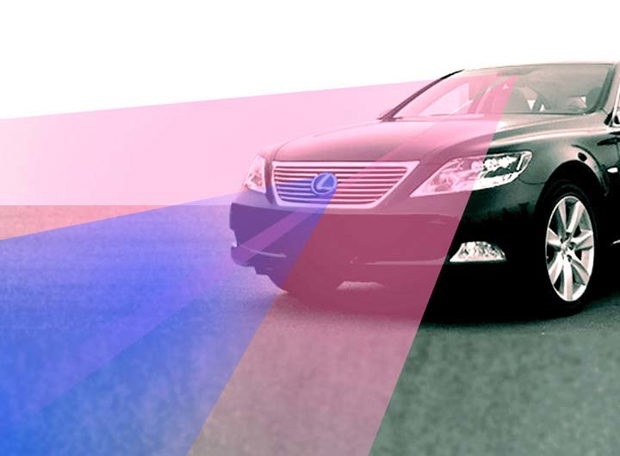 In 2006, Lexus enhanced its system with windshield-mounted cameras to detect "soft" objects like people or animals.
In 2006, Lexus enhanced its system with windshield-mounted cameras to detect "soft" objects like people or animals.
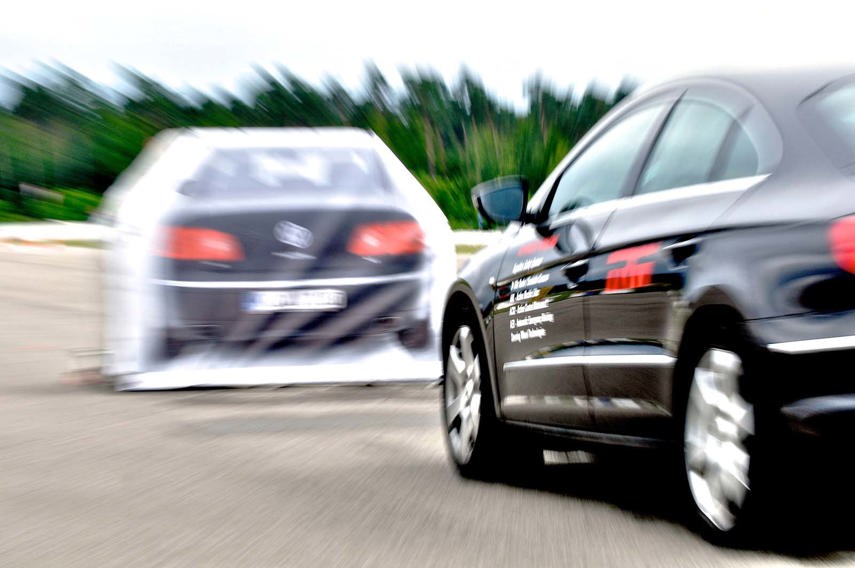 Autonomous emergency braking (AEB) takes collision avoidance a step further, adding automatic braking to the mix if the driver doesn't react to an obstacle detected by the car's forward crash sensors.
Autonomous emergency braking (AEB) takes collision avoidance a step further, adding automatic braking to the mix if the driver doesn't react to an obstacle detected by the car's forward crash sensors.
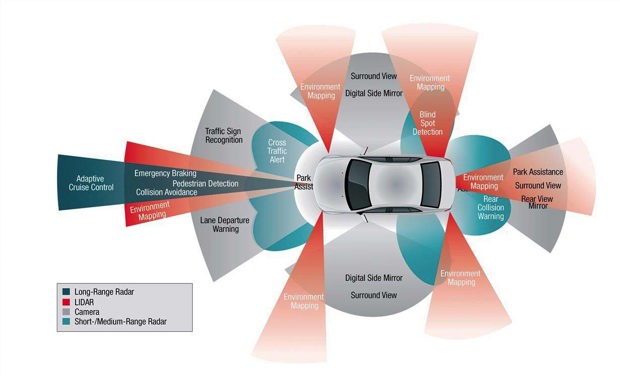 Automatic braking, adaptive cruise, and lane departure prevention systems are all key to the development of autonomous vehicle technology. All that's missing is the ability for cars to communicate with each and with roadway infrastructure; like it or not, self-driving cars are coming.
Automatic braking, adaptive cruise, and lane departure prevention systems are all key to the development of autonomous vehicle technology. All that's missing is the ability for cars to communicate with each and with roadway infrastructure; like it or not, self-driving cars are coming.
